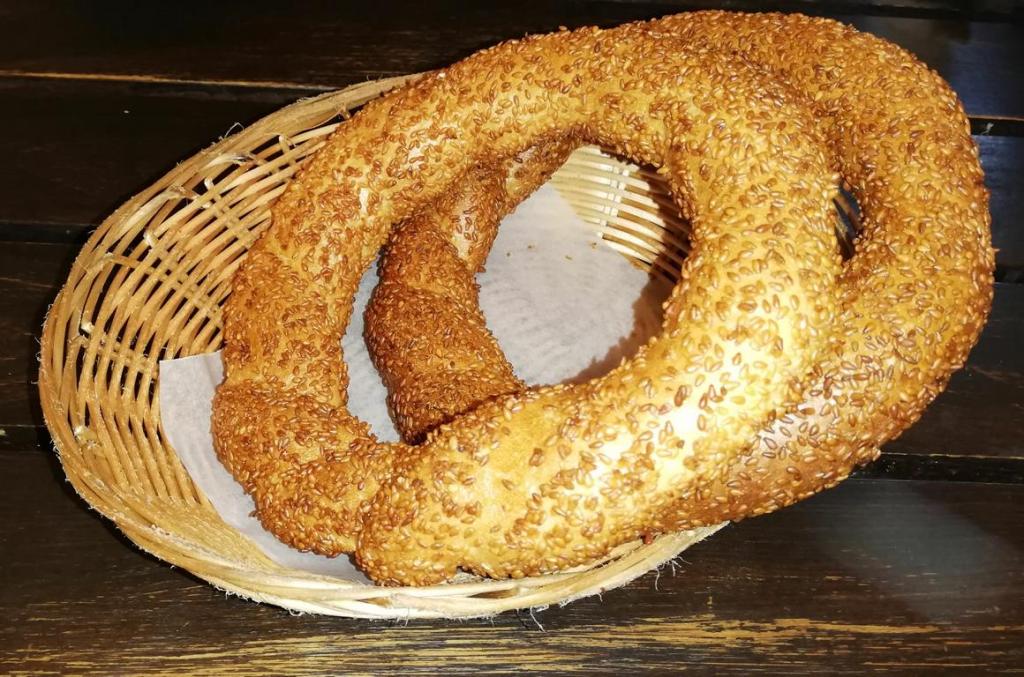
As usual you can click on most images to enlarge them ☆ Wie immer könnt ihr die meisten Bilder durch Anklicken vergrößern
Diesen Beitrag auf Deutsch lesen? Bitte scrollen.
I wish you all a late happy new year! Yes, Currywurst & Kimono is still alive! I hope to find more time fort he blog in the future, but progress is a bit slow at the moment. Anyway you don’t need to be afraid that there won’t be any new posts. It just takes a little while…
Today it’s time for a little culinary education, namely the German bread culture.
Germany is really the country of bread. Germans eat a lot of bread. Wether in the morning as breakfast, in the evening for dinner or in between as a snack for picnic outside or for lunch break in office or school. Another word for “dinner” is “Abendbrot” in German, meaning “evening bread”. That alone shows the importance attached to bread in German culture. In Europe and North America it is an indispensable staple food like rice in Japan (and many other Asian countries) which can also be associated with a meal. The word “bread” was also used as a synonym for occupation or alimentation. Even today there are still a lot of German expressions that indicate the importance of bread like f.e. to treat someone “with sugar bread and whip” (in English: with a carrot and a stick – to attract and motivate someone with sugar bread/a carrot and help a little more roughly with a whip/stick), something is “bread-less art” (in English: unproftable arts – when you cannot earn money with it) or “at first you have to bake small rolls” (in English: to set one’s sights low – to start simple and save money).
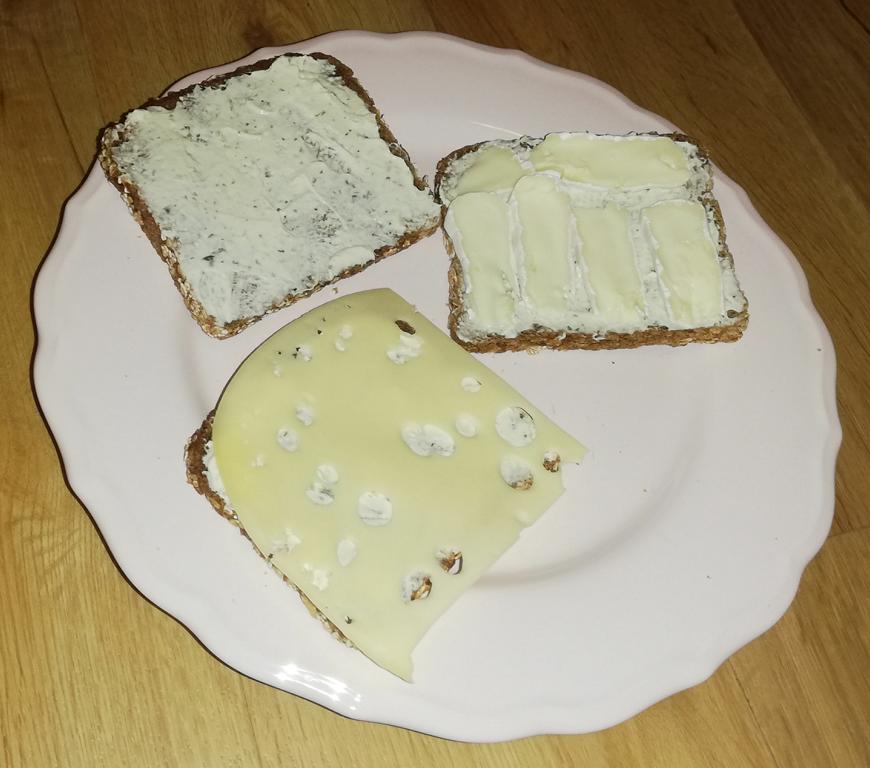


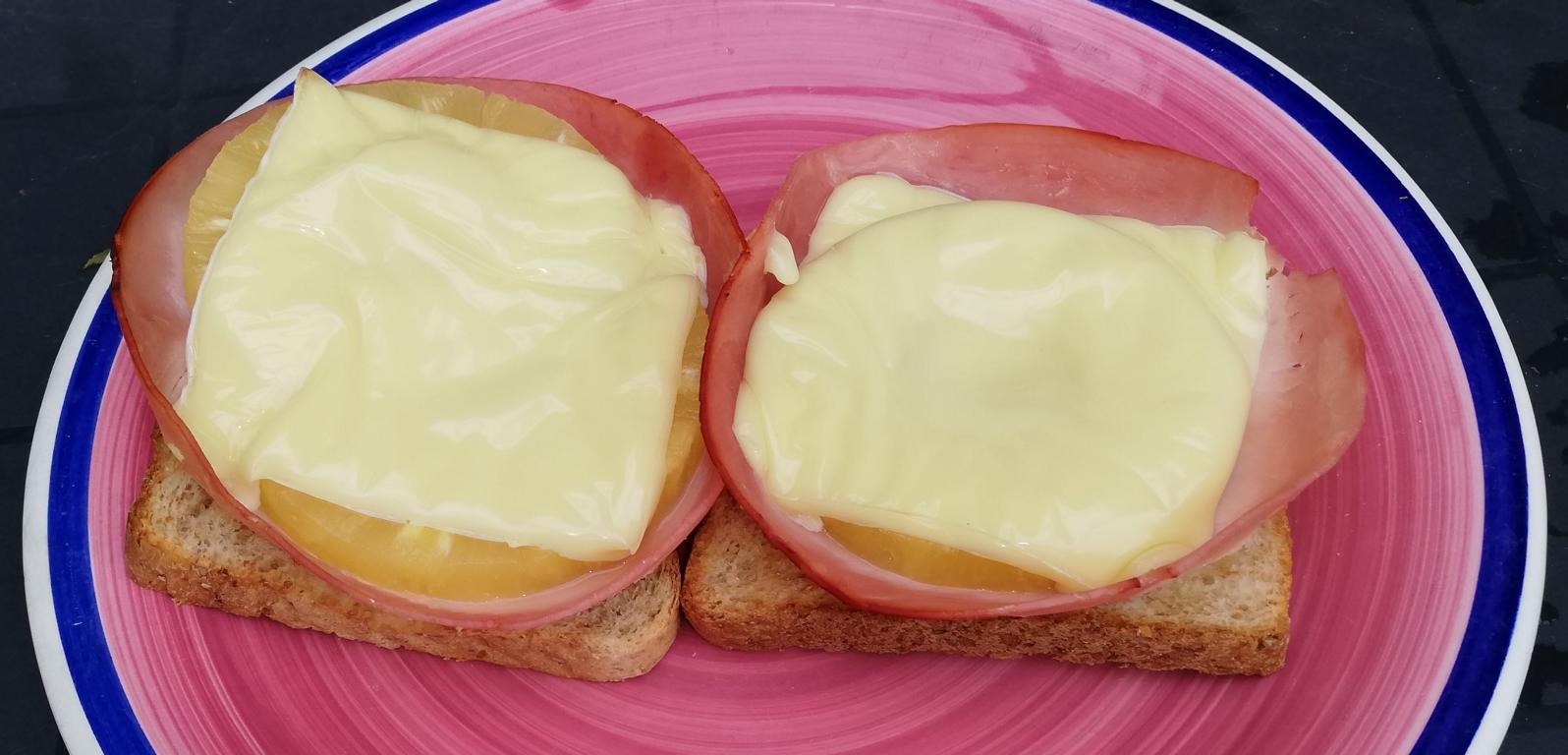

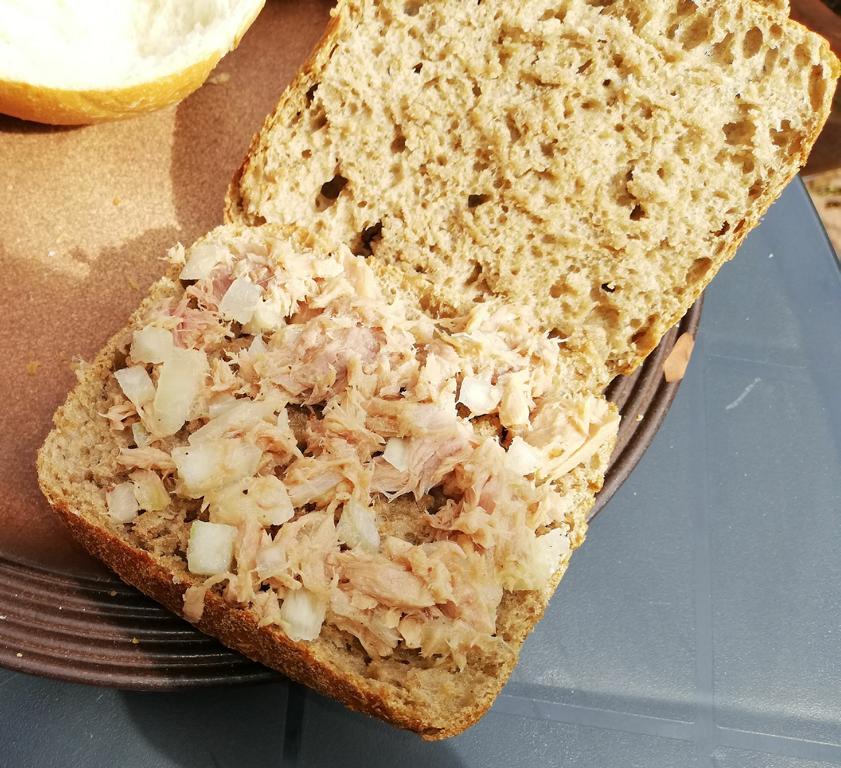
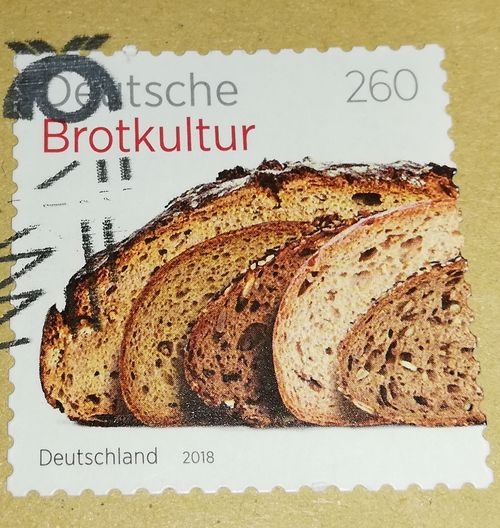

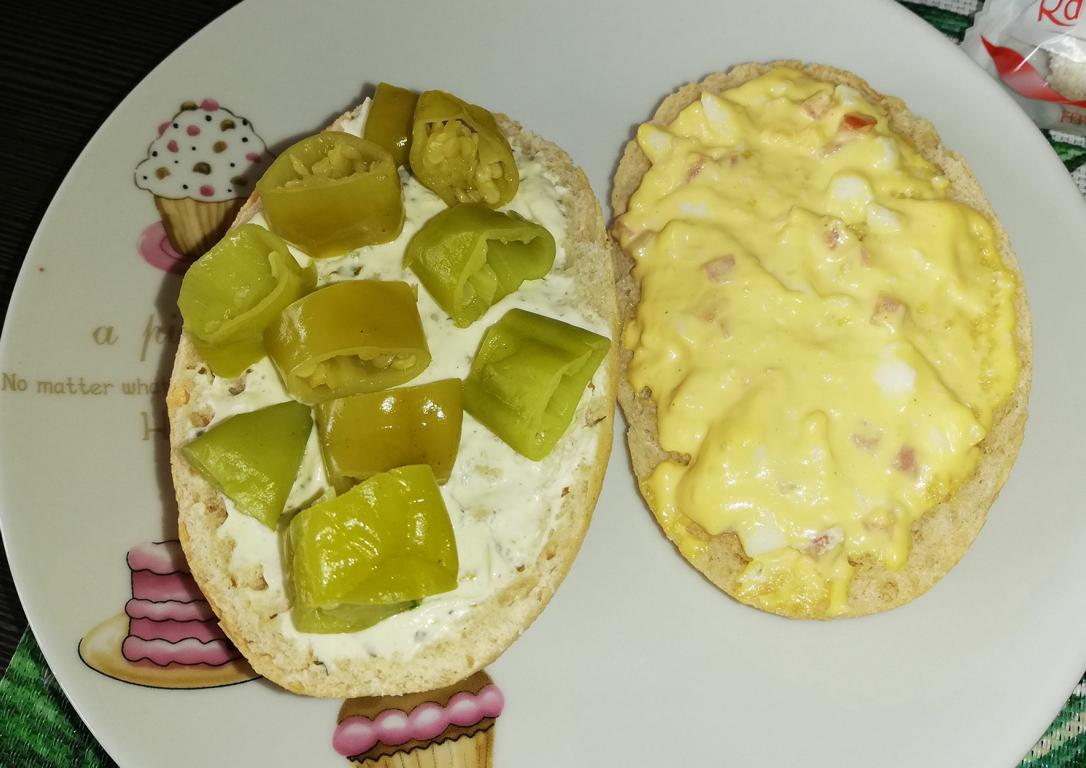
The origin of bread
Bread has existed in its earliest form since the Middle Palaeolithic Age at the latest. At the beginning wild oat and barley were grinded into flour, mixed with water and cooked or baked. It was rather a mash, that was sometimes dried and later baked as round flat bread on stone plates or in the ash. In many places there are archaeological sites of Stone Age remains which prove that bread baking has been existing about 4.000 years before the development of agriculture and cereal growing. Around 10.000 years ago humans began to systematically cultivate grain.
 Two inventions have decisively revolutionized bread baking: Firstly the development of baking ovens and secondly the discovery of the effects of yeast. With an oven it was now also possible to bake round and bulky bread types evenly in the hot steam. The simplest form consisted of an upturned clay pot on a hot stone. The use of yeast made the batter softer and tastier. But this discovery took a long time since the fermentation process at first happened purely accidental and could only be controlled by humans little by little. The first humans who pottered at the advancement of bread baking, where the ancient Egyptians. They even built up bakeries and created 30 different sorts of bread between 2850 and 1500 before Christ. From Egypt the bread culture got through Greece and the Roman Empire and finally reached Europe. The Romans developed the first big-size mills for the production of finer flour and devised dough mixers. Until the 19th century bread in Europe was baked according to Roman basic technics with small modifications. In Germany it is popular as ever and meanwhile available in varied sorts.
Two inventions have decisively revolutionized bread baking: Firstly the development of baking ovens and secondly the discovery of the effects of yeast. With an oven it was now also possible to bake round and bulky bread types evenly in the hot steam. The simplest form consisted of an upturned clay pot on a hot stone. The use of yeast made the batter softer and tastier. But this discovery took a long time since the fermentation process at first happened purely accidental and could only be controlled by humans little by little. The first humans who pottered at the advancement of bread baking, where the ancient Egyptians. They even built up bakeries and created 30 different sorts of bread between 2850 and 1500 before Christ. From Egypt the bread culture got through Greece and the Roman Empire and finally reached Europe. The Romans developed the first big-size mills for the production of finer flour and devised dough mixers. Until the 19th century bread in Europe was baked according to Roman basic technics with small modifications. In Germany it is popular as ever and meanwhile available in varied sorts.
The distingtiveness of German bread culture
There are currently over 3.200 different sorts of bread in the German market place because German people especially love variety. While in other countries mainly wheat bread is produced, Germany also offers a lot other cereal species. This is mainly due to good cultivation conditions, f.e. rye in North Germany or spelt in the Swabian Alps. Additionally Germany once consisted of many small individual states which all maintained their own bread culture. Different tastes evolved and even today there is a variety of completely different bread recipes.
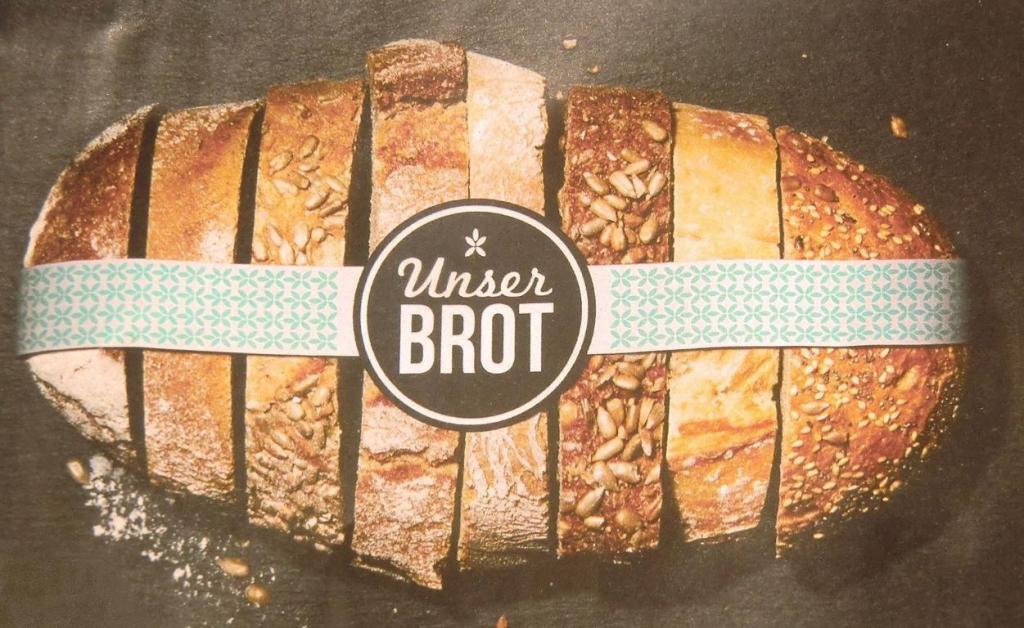
Also the fact that there is an own training course for master baker in Germany is worldwide unique. So the quality of German baking culture is also valued internationally. The German bread culture was declared as immaterial UNESCO World Heritage Committee. To underline this the German bread institute yearly nominates one sort of bread as the “Bread of the Year”. In 2021 it was the three-grain bread, in 2022 the wood-fired oven bread and in this year (2023) it is the pumpkin seed bread.
The different sorts of bread
Basically there are the two sorts leavened and unleavened bread. Leavened bread is – as its name implies – made with a leaving like sourdough or yeast and unleavend bread like f.e. flatbread is made without it. You can also categorize bread according to the used cereal species (f.e. soft wheat, the subspecies spelt, hard wheat or rye).
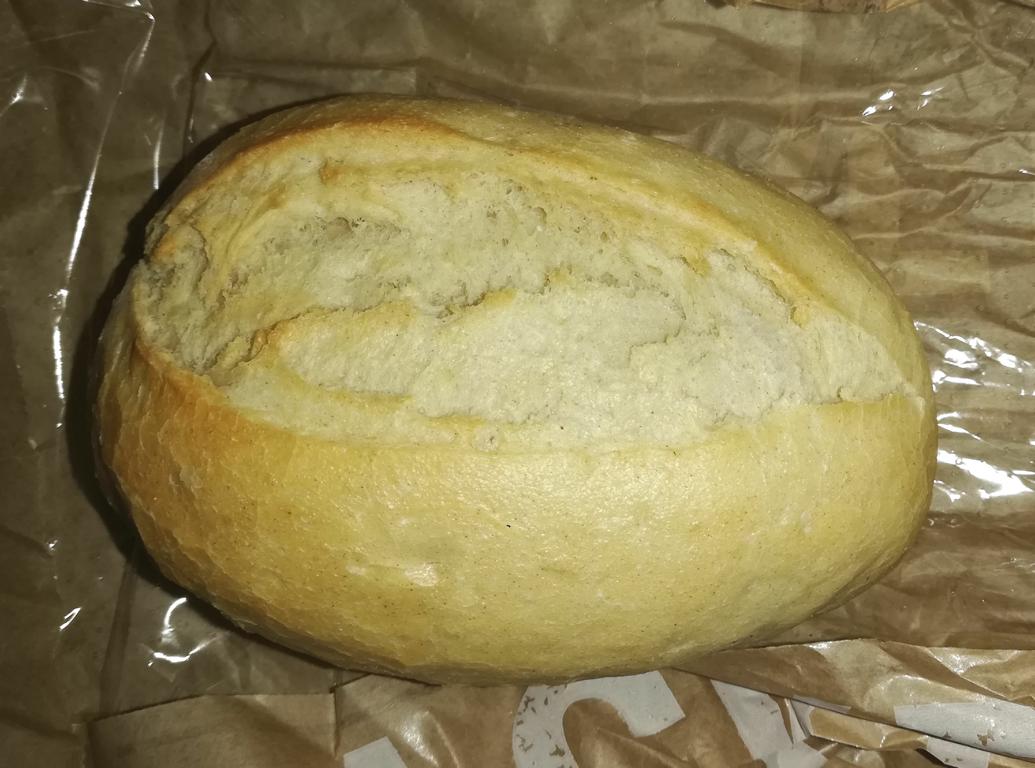 Wheat bread – also called light bread or white bread – is f.e. eaten as baguette in France or as ciabatta in Italy. Ususally it has a light-coloured dough (therefore the name), tastes mild und fluffy since it is often very soft, and is generally said to be rather unhealthy. Also the feeling of satiety doesn’t last long after consuming and you can only keep the bread a short time.
Wheat bread – also called light bread or white bread – is f.e. eaten as baguette in France or as ciabatta in Italy. Ususally it has a light-coloured dough (therefore the name), tastes mild und fluffy since it is often very soft, and is generally said to be rather unhealthy. Also the feeling of satiety doesn’t last long after consuming and you can only keep the bread a short time.
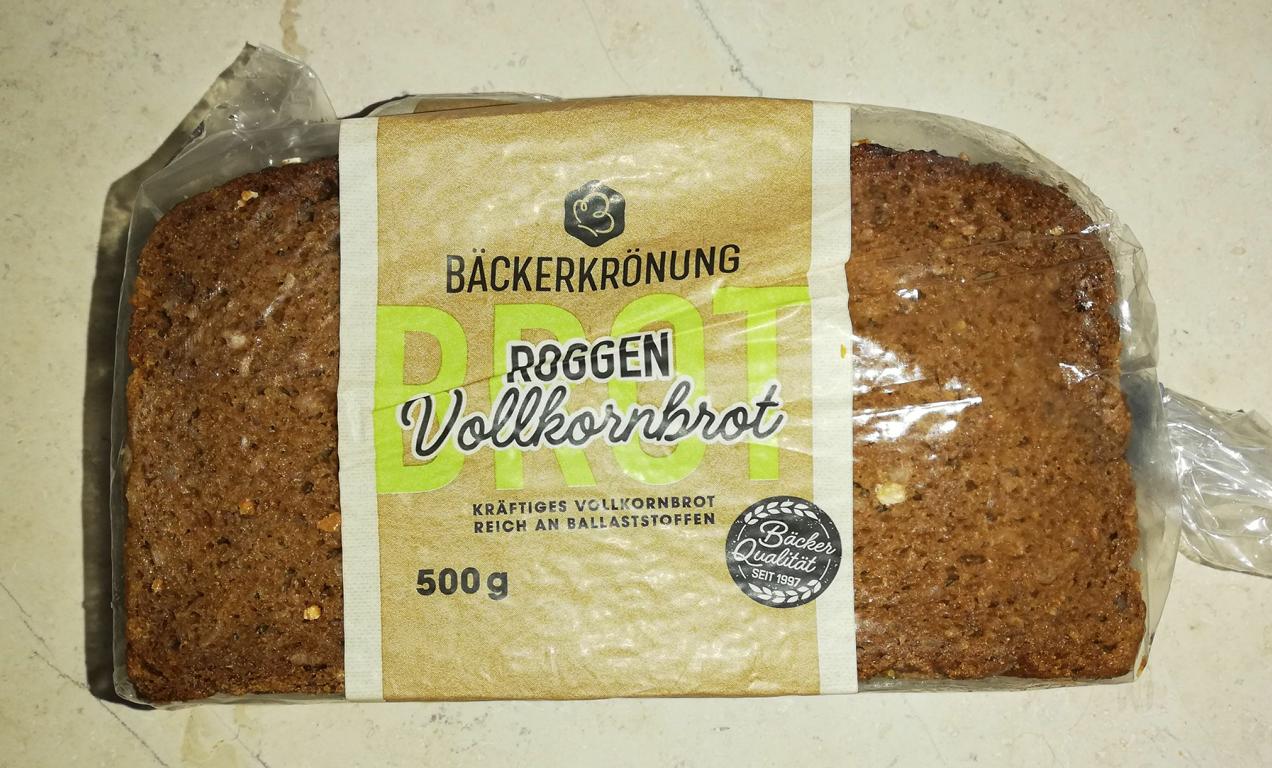 Rye bread, also called dark, brown or black bread, has a darker colour, is firmer, often grainier, harsher, juicier and more aromatic in flavour. Due to the high amount of the amino acid lysine rye products are said to be important components of a balanced nutrition. The cereal mash is more nutritious and stays longer in the digestive system which has a more filling effect and should be also anticarcinogenic. Which is why rye is considered to be a healthier grain from a nutritional point of view. Bread can be also made of amelcorn and einkorn wheat (or one-grained wheat), which is no longer done on a large scale these days.
Rye bread, also called dark, brown or black bread, has a darker colour, is firmer, often grainier, harsher, juicier and more aromatic in flavour. Due to the high amount of the amino acid lysine rye products are said to be important components of a balanced nutrition. The cereal mash is more nutritious and stays longer in the digestive system which has a more filling effect and should be also anticarcinogenic. Which is why rye is considered to be a healthier grain from a nutritional point of view. Bread can be also made of amelcorn and einkorn wheat (or one-grained wheat), which is no longer done on a large scale these days.
But you can also categorize bread according to the used sort of flour. The most common all-purpose flour in Germany is the flour type number 405. It is a very light-coloured flour, which has good baking properties but low mineral content and can be kept quite long. 405 is mainly obtained from the first grist. It doesn’t contain husk parts any more and is rich of starch. When it is ground further, the darker flour types are created. These contain more from the oily germling and can therefore only be kept for a short time, but are richer in vitamins (especially B vitamins) and minerals. The darker a wheat flour is and the higher the flour type number the more mineral-rich it is. Also for spelt and rye flour there are different flour types.
Whole wheat flour is the healthiest. It contains husk and germling and therefore has a lot of fiber, vitamins, oils and minerals. The essential fatty acid content of the oils is considered to be particularly beneficial to health.
However it was a long way to go before whole wheat was recognized. Until the early 19th century, dark bread was considered backward and rural. Those who could afford it preferred white flour. Finely sifted, without rough ingredients and containing more starch, it significantly shortened the baking time and responded better to yeast and other leavening agents. It quickly became a status symbol for the upper class. With the industrial production of food, dark bread was increasingly advertised. People also began to look more scientifically into nutrition. During wartime, the Westphalian pumpernickel, a whole wheat bread made from rye whole grain, established itself as a practical emergency ration for soldiers because of its long durability. A Westphalian emigrant brought the recipe into the US Army in the 19th century. The recipe was problably known as early as the 16th or 17th century. Also the somehwat lighter (because made of rye and wheat) but still dark “Kommissbrot” (English: army bread) served its purpose as a military supply.
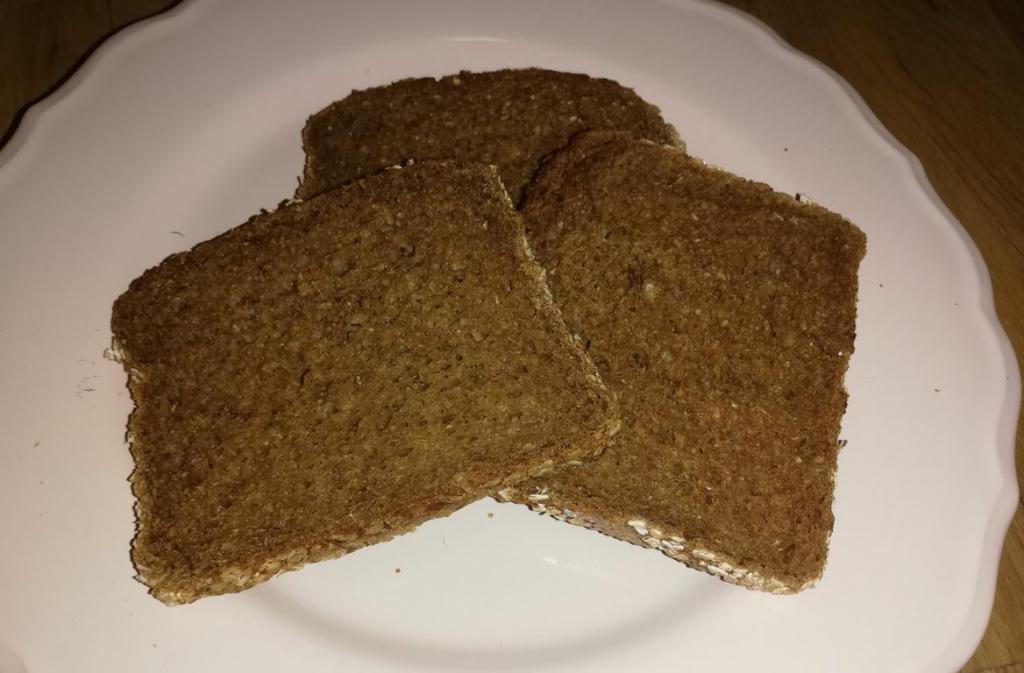

Due to the healthy ingredients of whole wheat bread, the consumption is said to be be a good prevention or risk minimisation for the widespread diseases diabetes and heart attack. It helps for a good bowel regulation, prevents colon cancer and lowers blood lipid levels.
Dark bread, which is somehow considered typically German, is a bit like dark chocolate for many people from other countries and in part also for the Germans themselves: Healthier than the light version, but a bit tart in taste. 😉 Sometimes it is tasty, f.e. as a hearty snack with cheese, cold cuts or a fried egg. However most people prefer to eat jam and honey on light white bread. But the most commonly eaten type of bread in Germany is the mixed bread made from rye and wheat flour. It is also known as gray bread and, depending on the recipe, can consist more of wheat or rye.

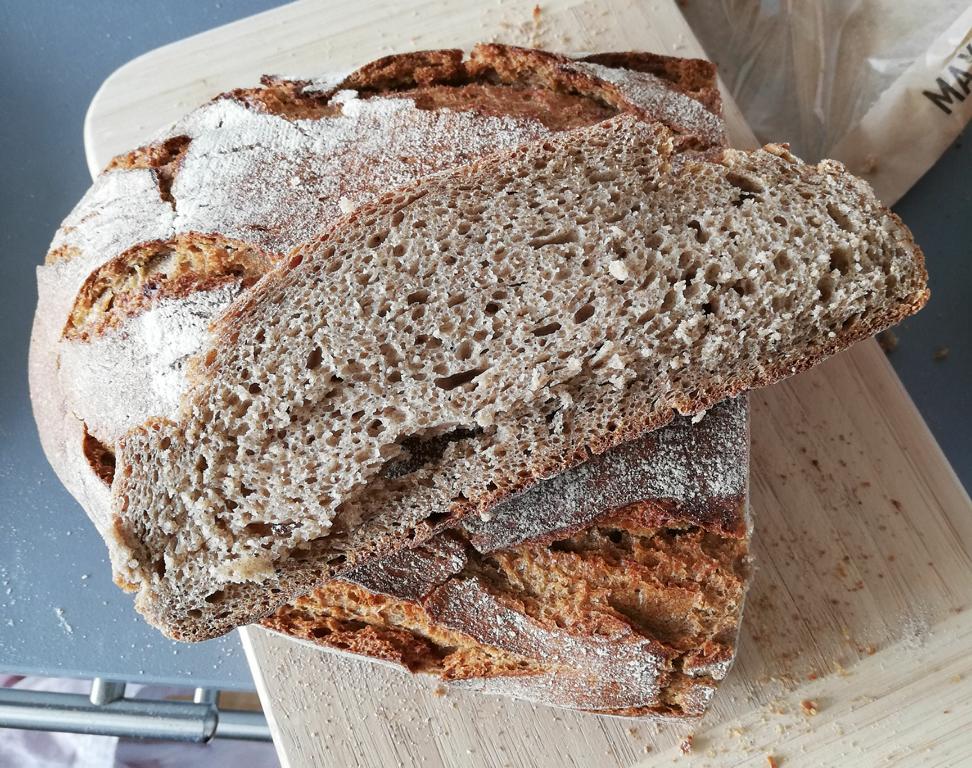


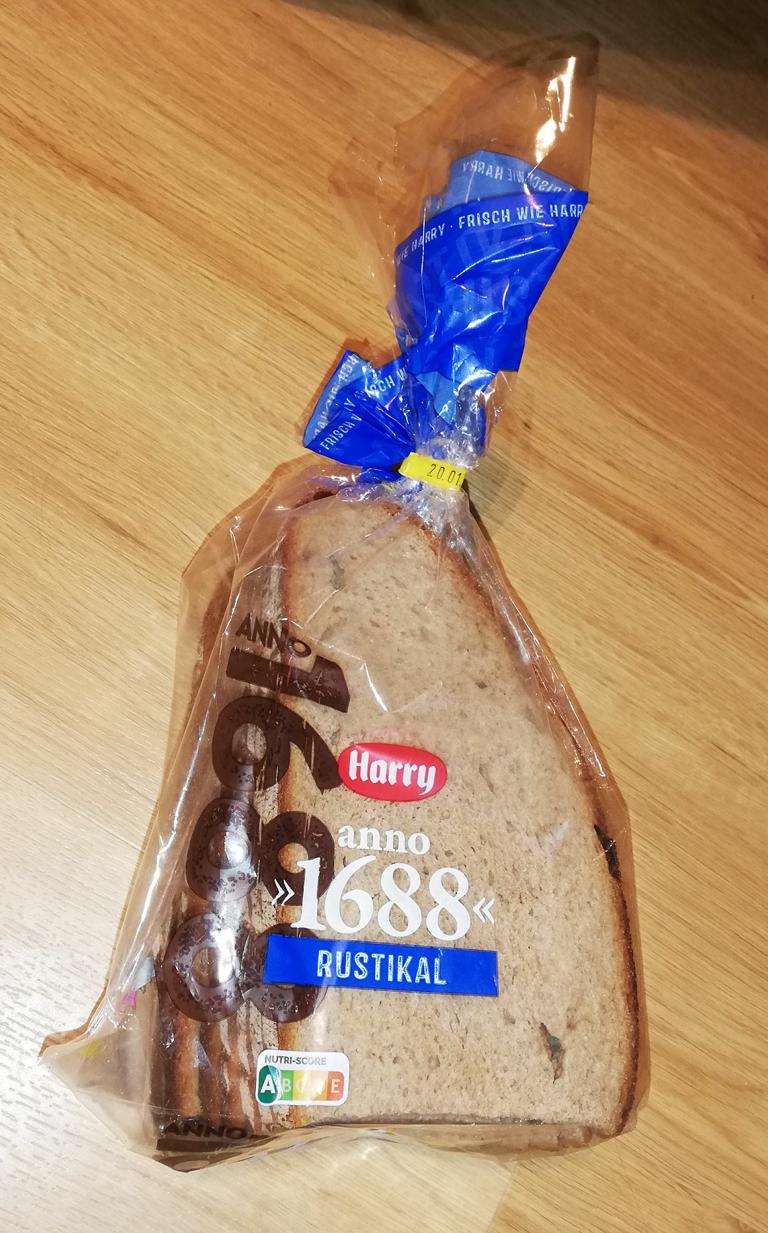
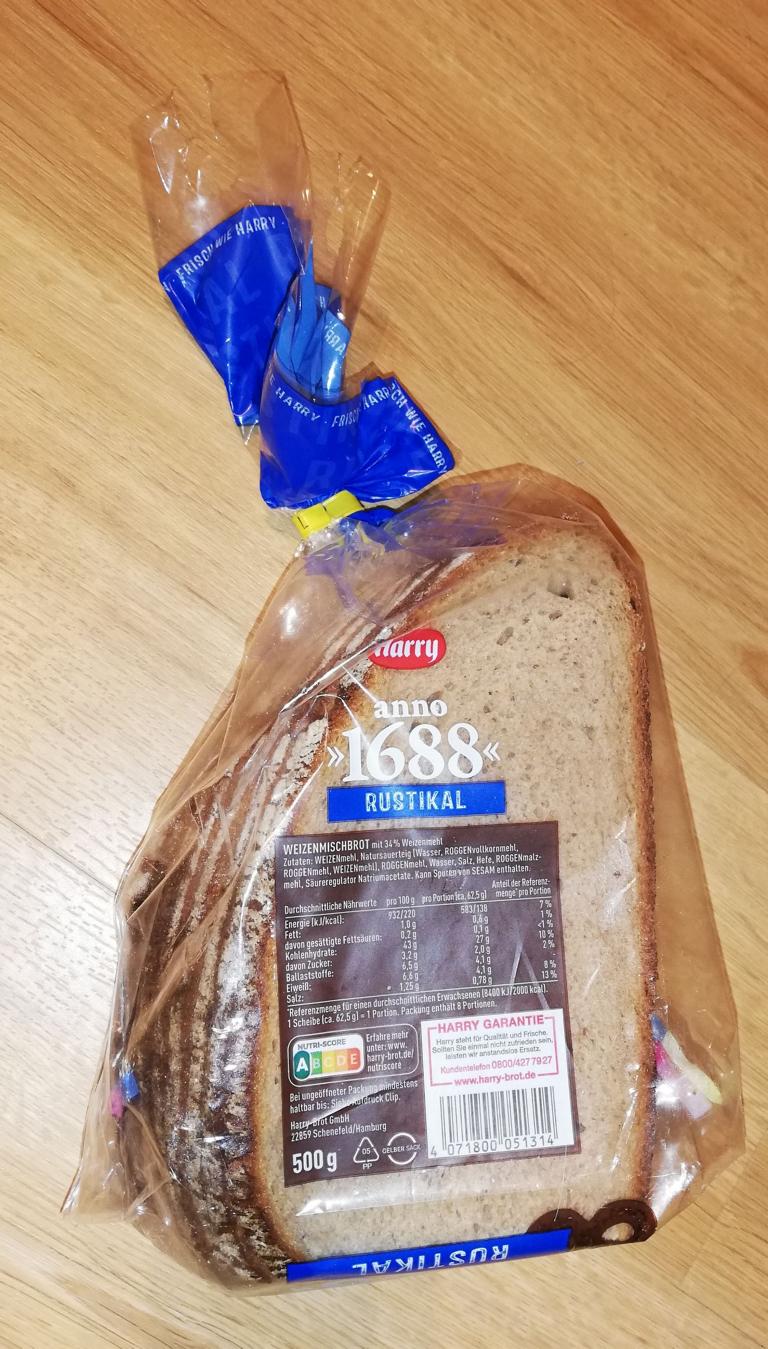
Furthermore there is special bread with special ingredients such as pumpkin seeds or sunflower seeds, protein bread, potato bread, vitamin-enriched or gluten-free bread and much more. Toast bread and crisp bread, which originally came from Sweden, are also common Germany. Toast bread which has been known in Germany for a long time, has only been offered in the typically light modern version since the 1950s and is now mainly consumed roasted using a toaster. Since the 1980s also the darker whole wheat toast is available.

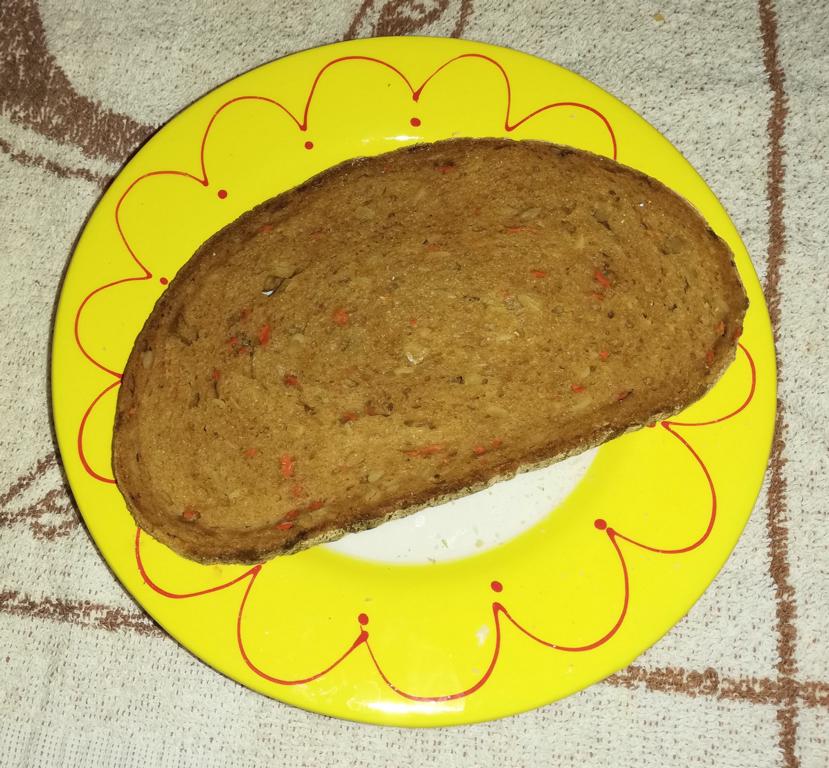
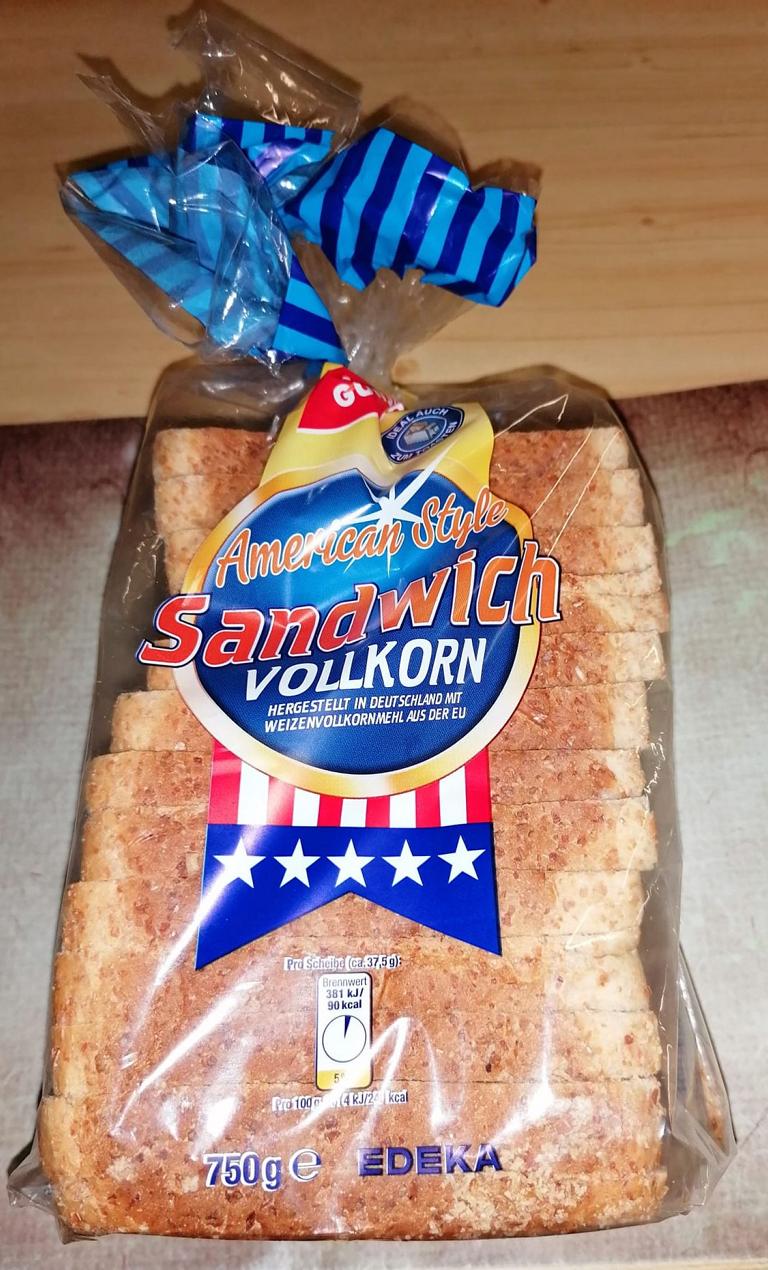
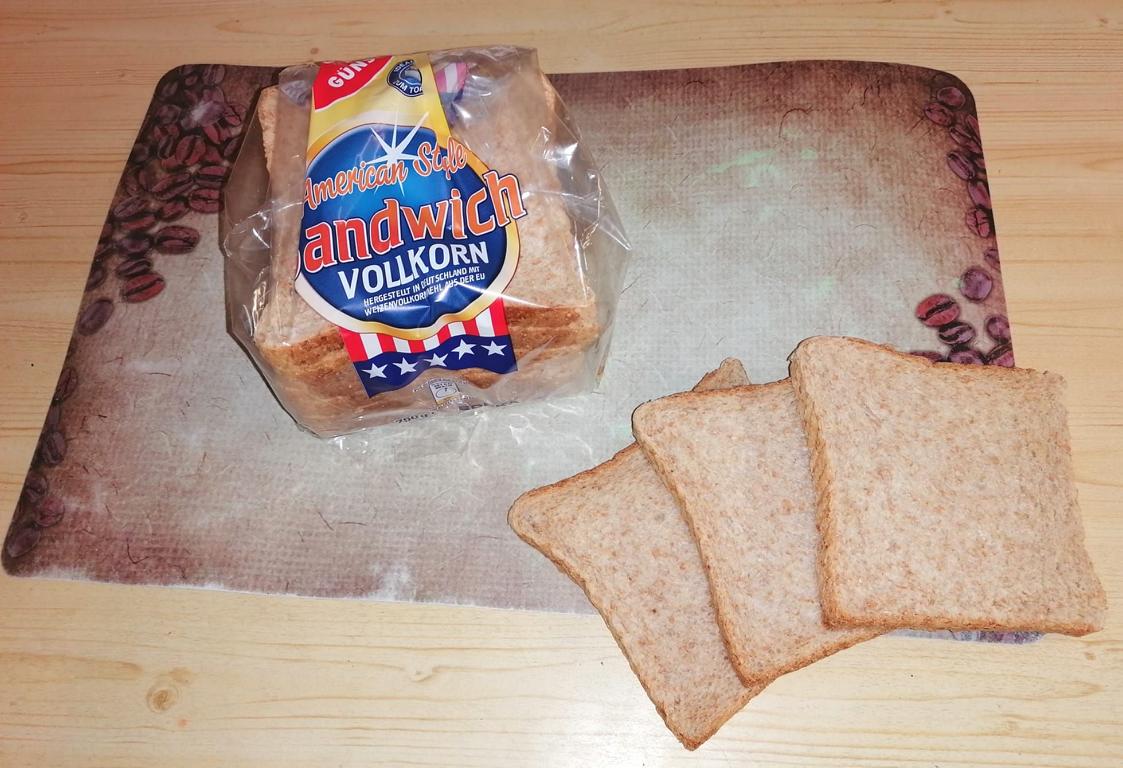
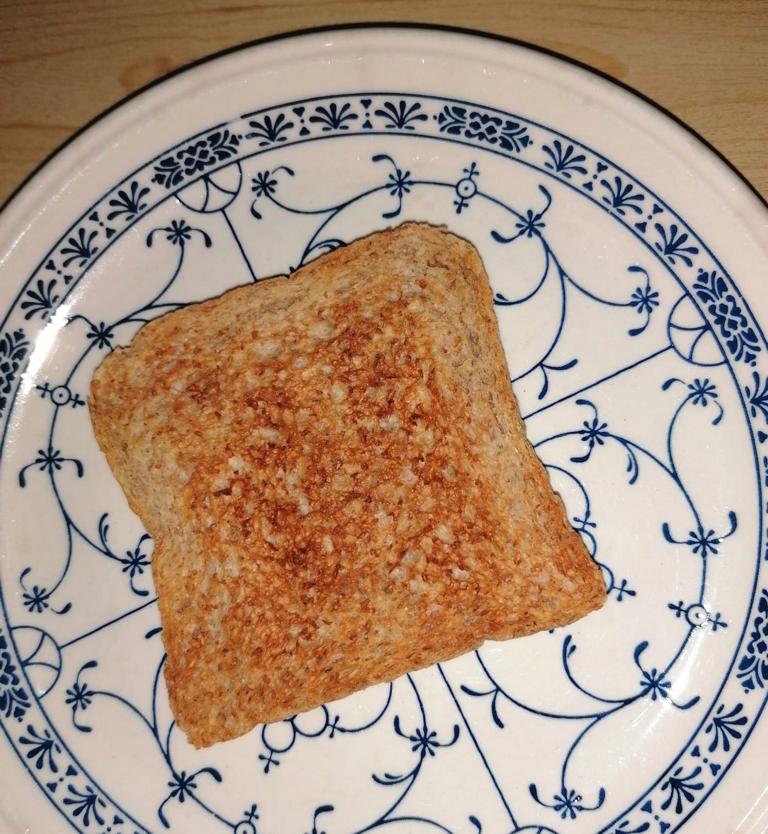

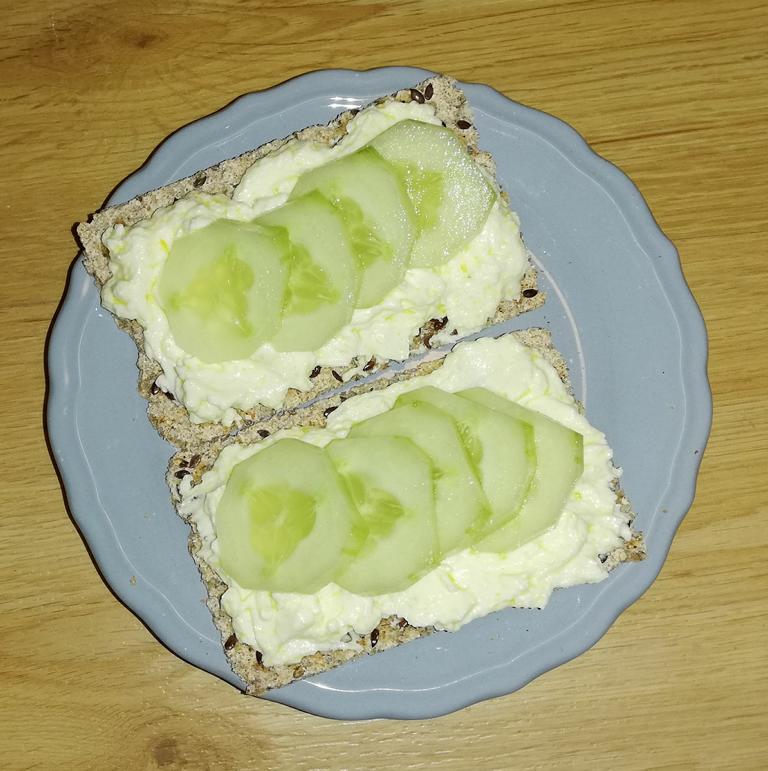
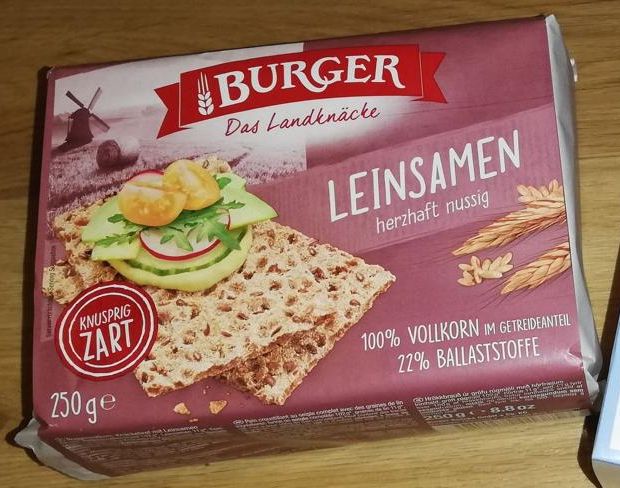
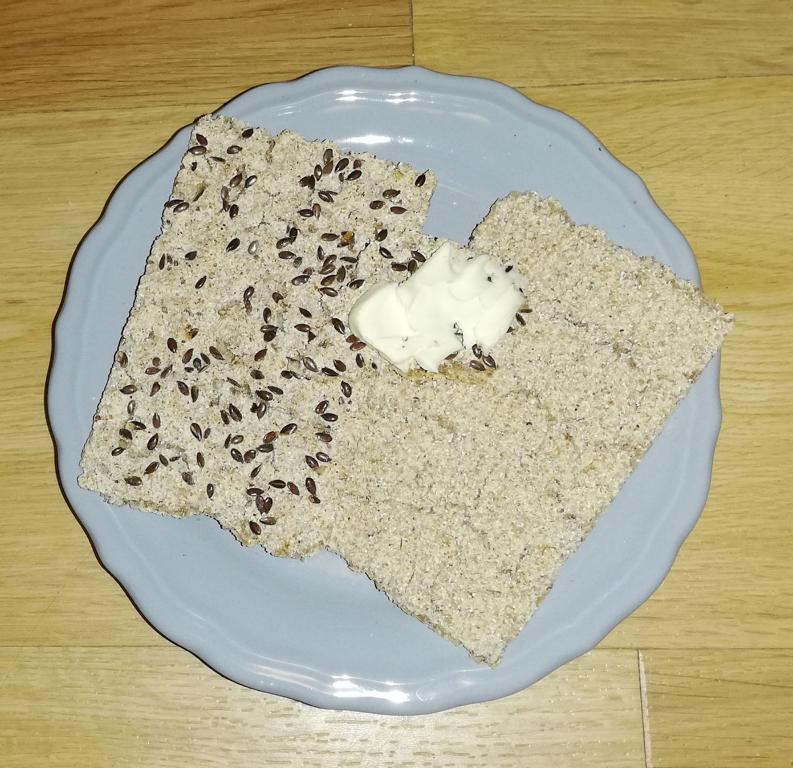
The hard, biscuitous and sweet rusks from Italy are known im Germany primarily as food for children and invalid’s diet because they are particularly gentle on the gastrointestinal system.
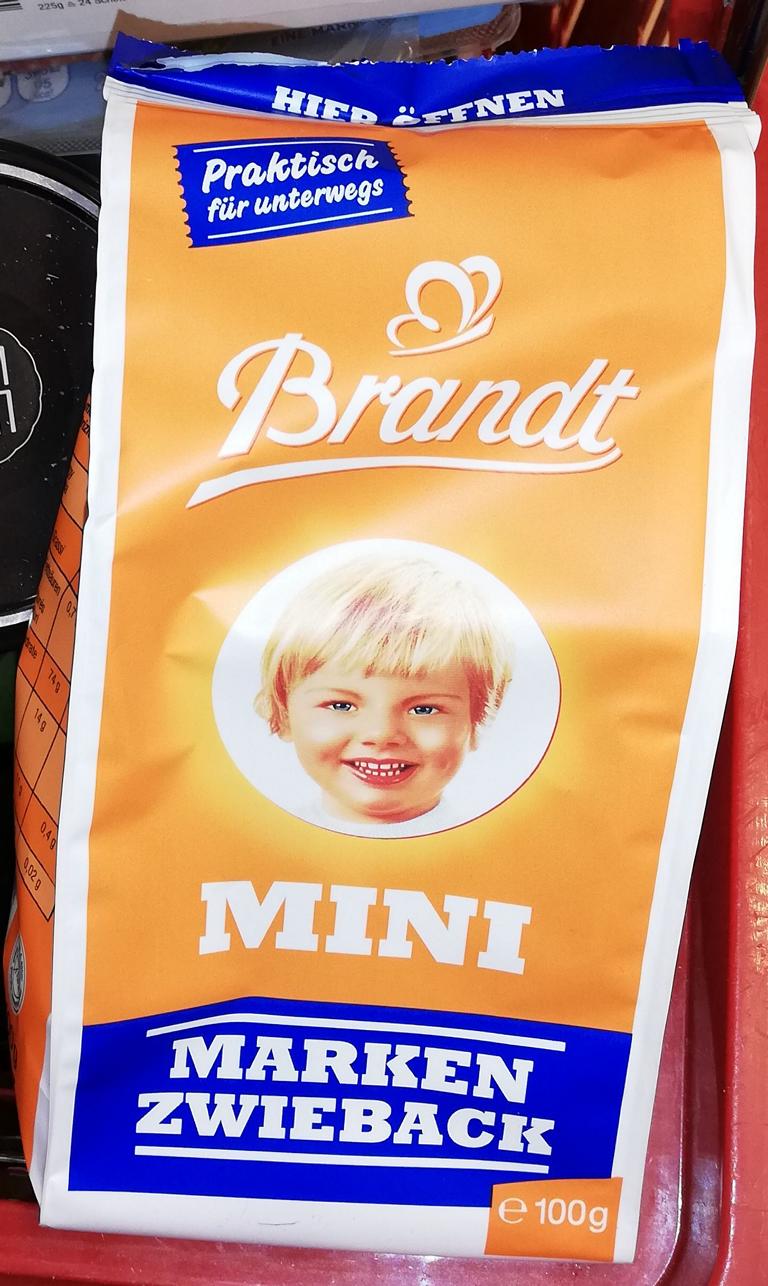
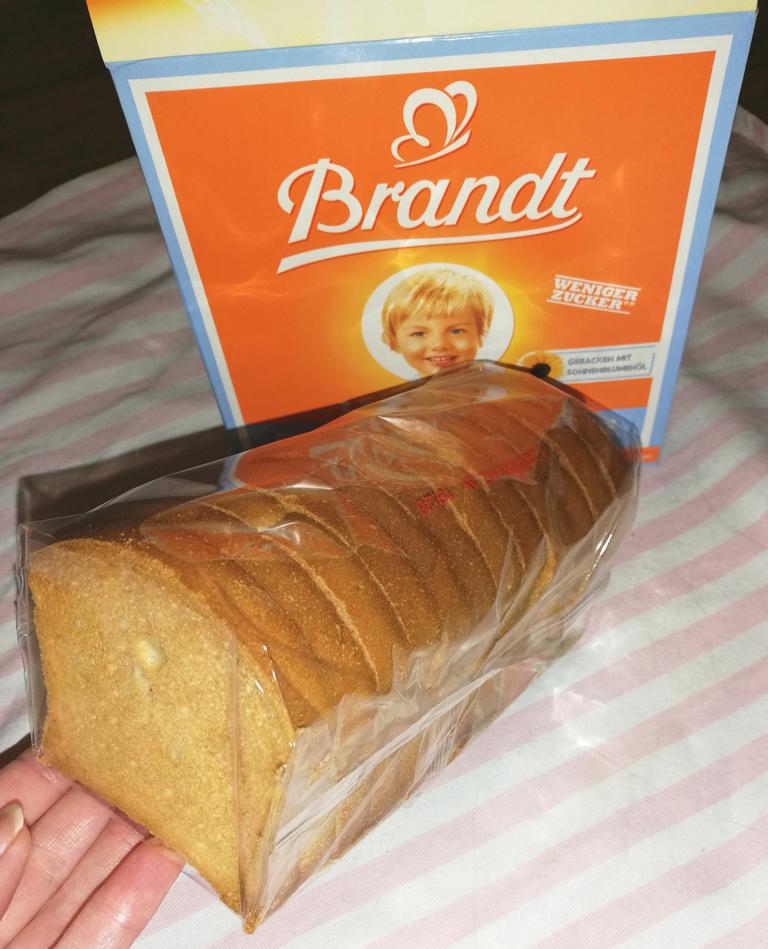

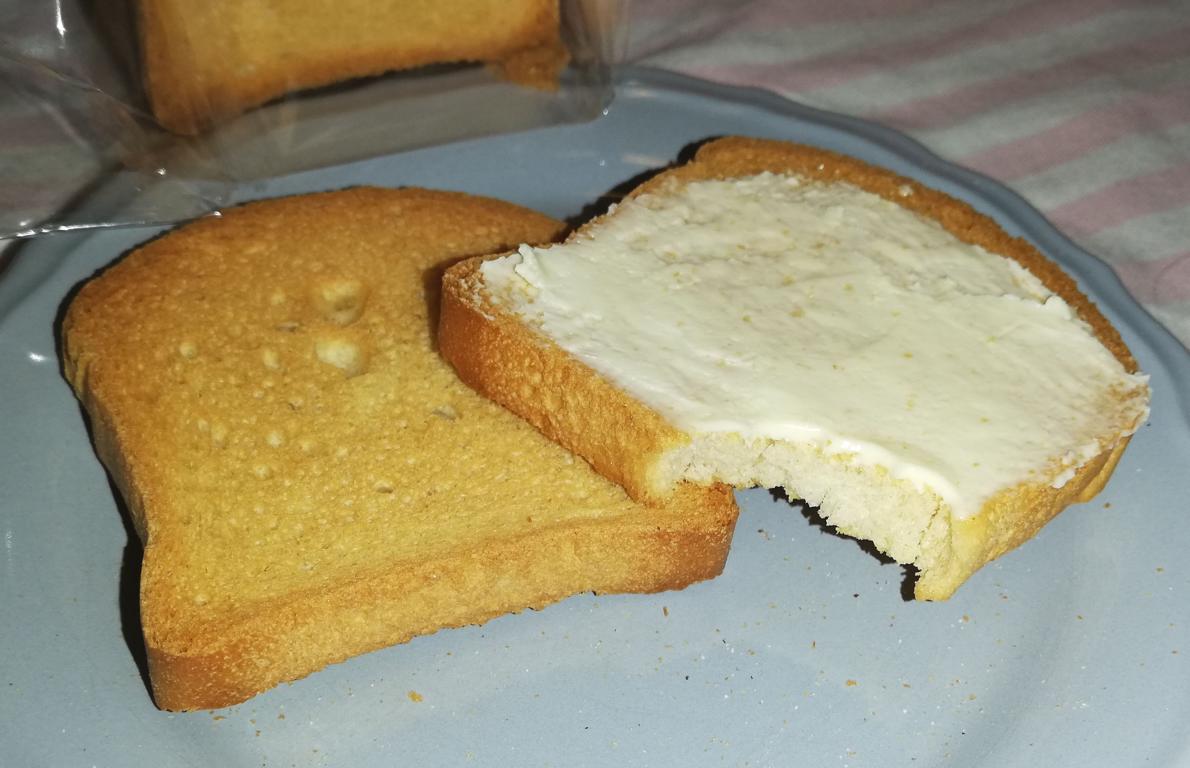
Since Germany is also very international due to immigration and cultural exchange, you can find breads from different countries in Germany. In addition to the types of bread mentioned above, there are sometimes also flatbread and simit (sesame rings) from Turkey, pita (white bread) from Greece, ciabatta from Italy, baguette and croissants from France, naan (light-coloured flatbread) from India or or tortilla from Mexiko in bakeries, supermarkets, foreign shops or restaurants.
Where do Germans buy their bread?
The best German bread is of course a fresh one from the bakery! Since Germans like to have breakfast rolls, especially on weekends, they want to be supplied with them early in the morning. Either they got it the day before or they rush to a bakery, which exists at every turn, the same morning before work or on Saturday. Most of them open at 06:00 or 07:00 a.m., when the supermarkets are still closed and fill the air with the smell of freshly baked products. Not every bakery is open on Sundays though, as most other shops in Germany are also closed on that day.
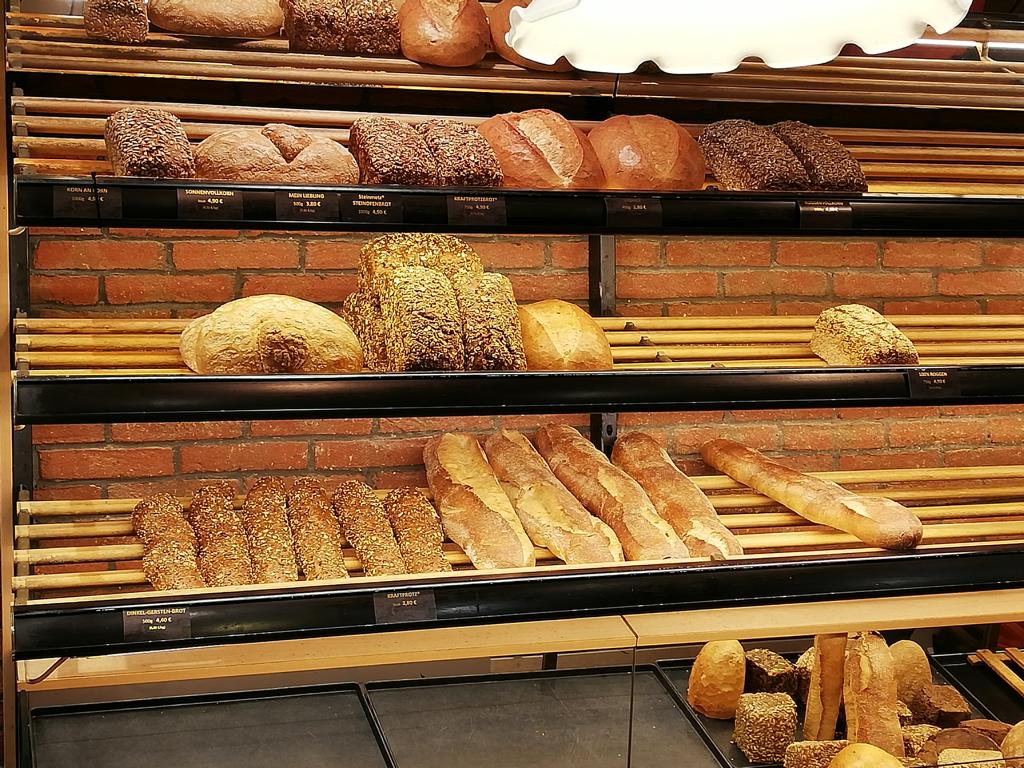

Since bread from the bakery is of course a bit more expensive and not everyone wants to fall out of bed for rolls in the morning, most people also buy a lot of bread in the supermarket. Every discount supermarket has packaged bread, already cut into slices, in many different types on offer as well as pre-baked rolls that you only need to re-heat in the oven. Larger supermarket chains and now most discounters as well even got an own section for “fresh baked goods”, that means rolls, whole loafs of bread, cakes and other baked goods, that are generally intended to be eaten soon. These are commonly pre-baked in bakeries, delivered to the supermarkets and baked again on site.
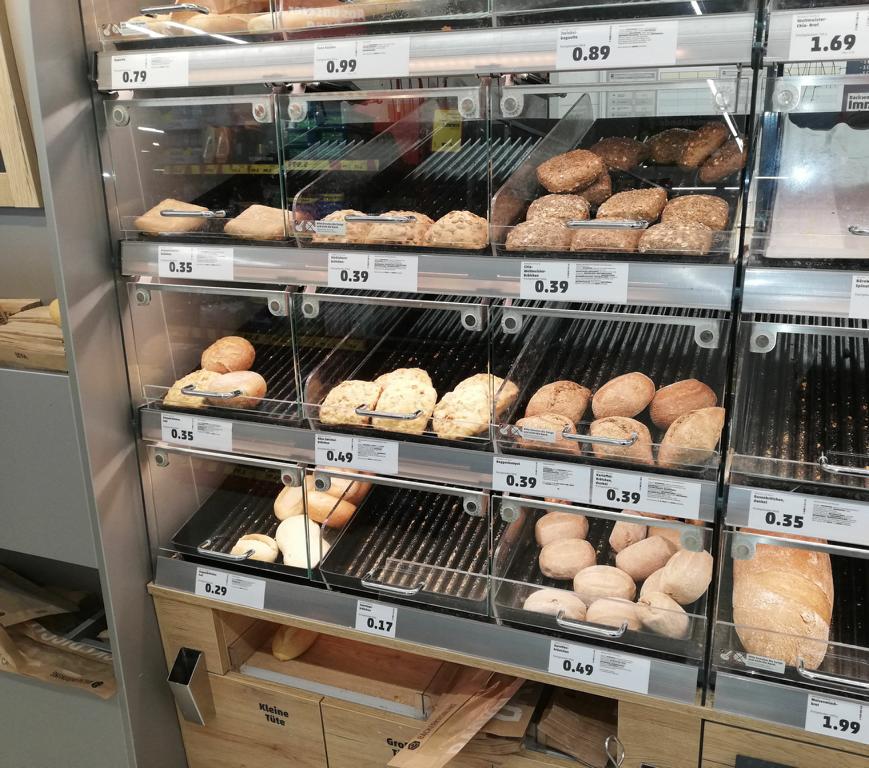
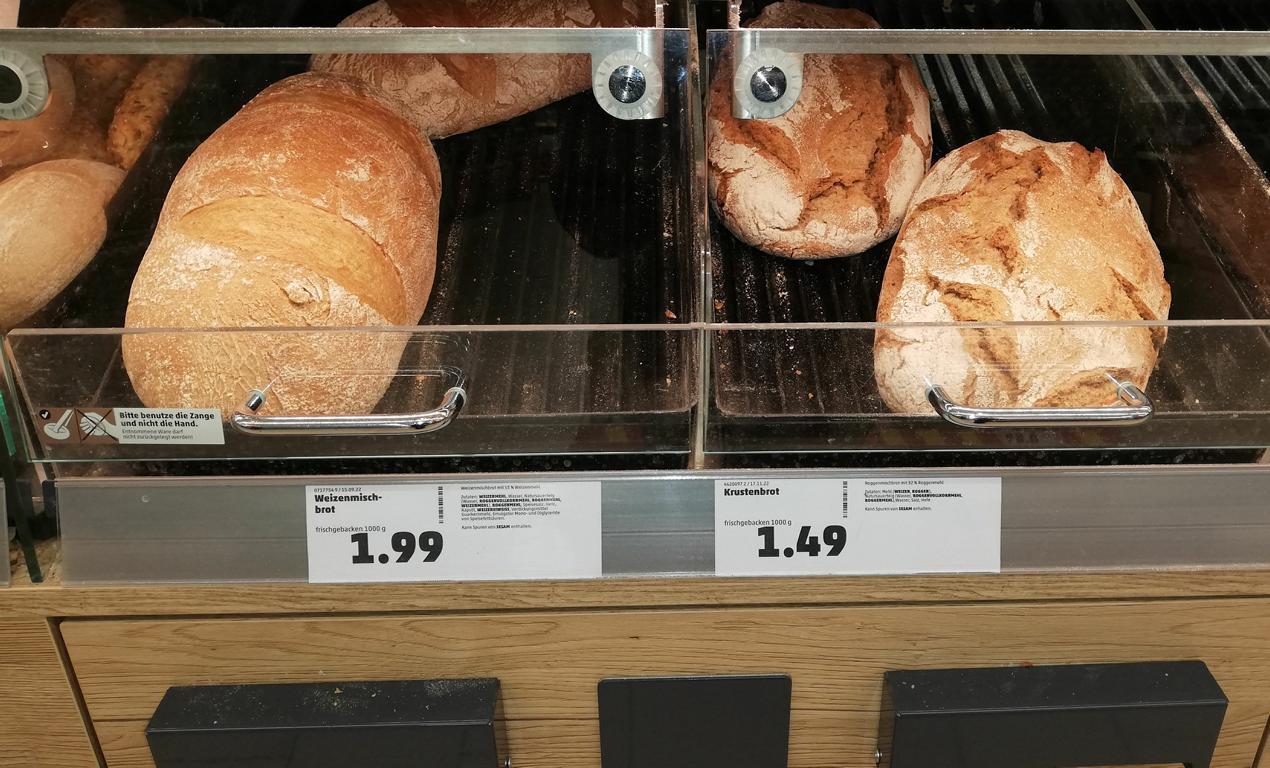

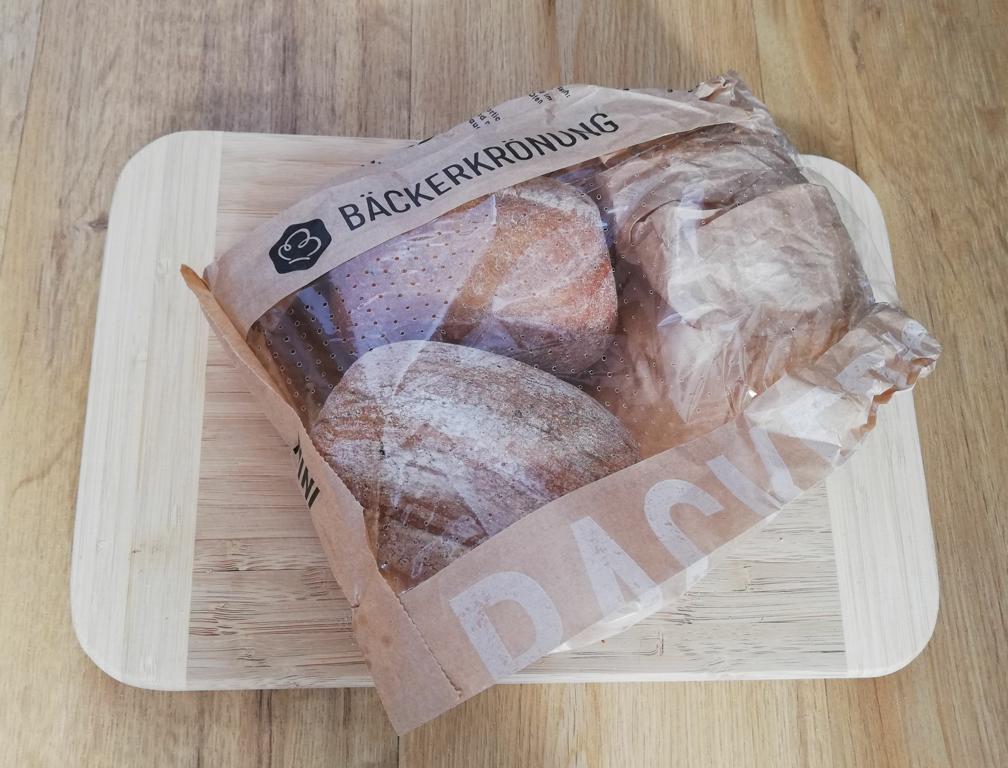

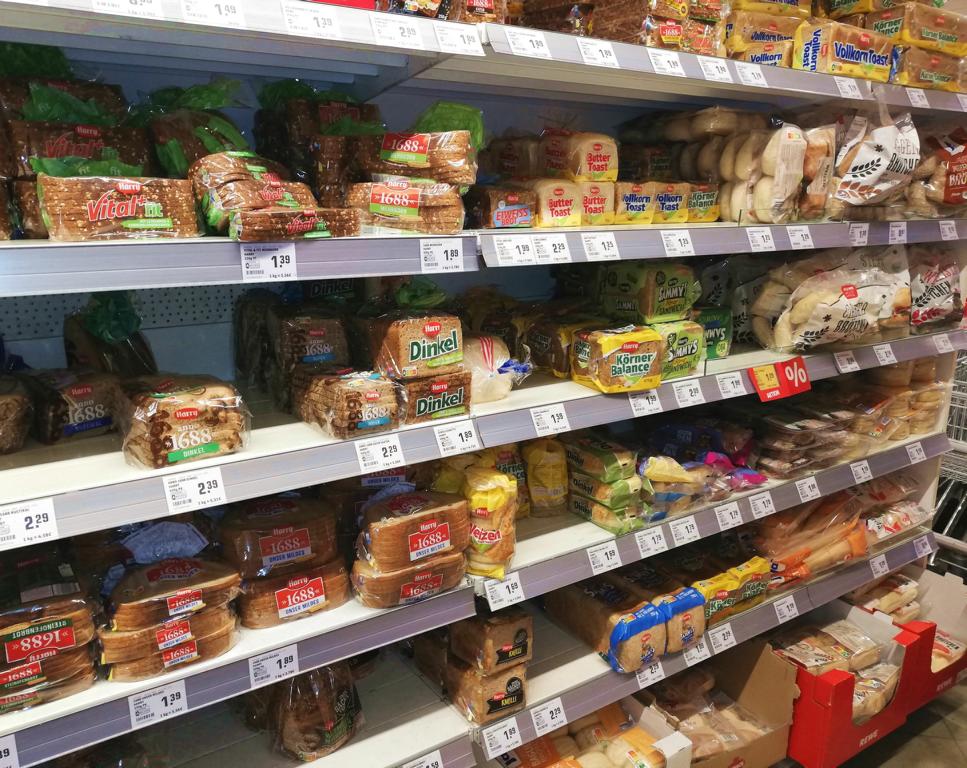
Bread you already have eaten from, whether sliced or as a whole loaf to cut yourself, will keep for a few days at room temperature in a bread box or wrapped in a tea towel. Some people also store their bread in the fridge which significantly extends the shelf l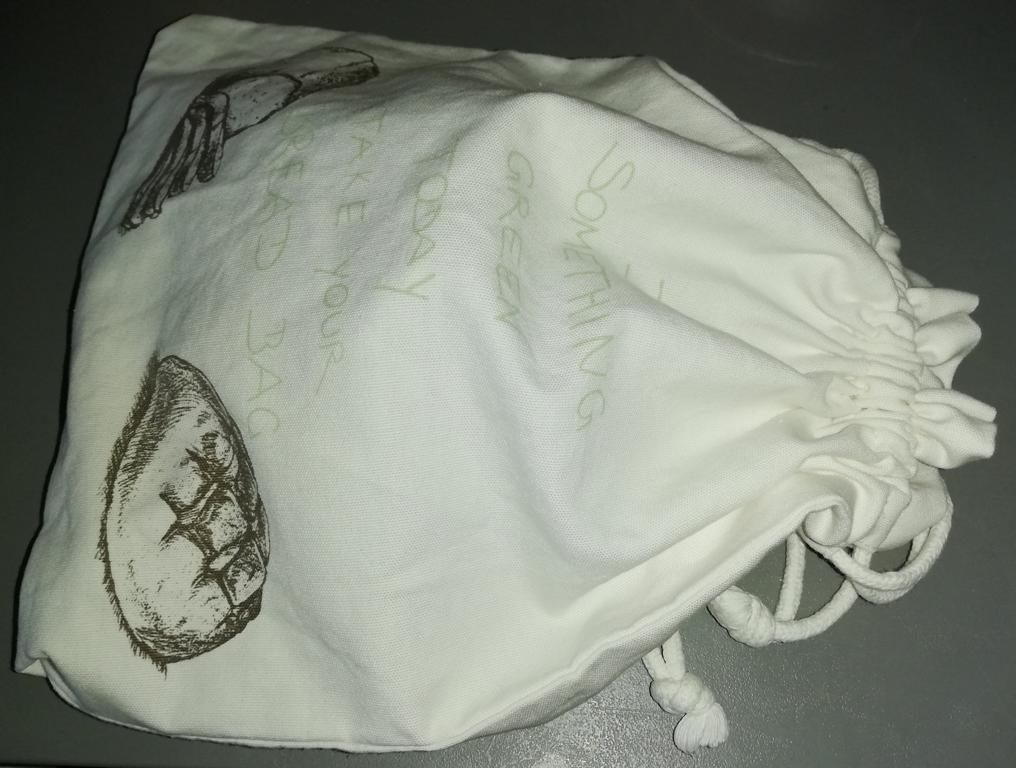 ife but the bread dries out quickly. If you want to be on the safe side, you can simply freeze bread and rolls and bake them in the oven when you use them. Bags of frozen bread rolls are also available in the supermarket. The quality after baking is surprisingly better than that of the uncooled pre-baked rolls. You see, frozen food doesn’t always have to be bad! 😉 Fresh rolls from the bakery or those from the supermarket can be baked again the next day or the day after that at the latest. But they get incredibly hard quickly.
ife but the bread dries out quickly. If you want to be on the safe side, you can simply freeze bread and rolls and bake them in the oven when you use them. Bags of frozen bread rolls are also available in the supermarket. The quality after baking is surprisingly better than that of the uncooled pre-baked rolls. You see, frozen food doesn’t always have to be bad! 😉 Fresh rolls from the bakery or those from the supermarket can be baked again the next day or the day after that at the latest. But they get incredibly hard quickly.

There are also a few uses for old bread, especially rolls, in the German kitchen. You can use shredded bread rolls as breadcrumbs (German “panko”) or put white bread cubes in milk to make hearty bread dumplings as an accompaniment to meat and vegetables or sweet bread casseroles.
Nowadays it has also become fashionable again to bake bread yourself. Some people do this because it is of course healthier without chemical ingredients and preservatives, others for reasons of cost (flour, water, salt and yeast are not expensive after all) and then there are those who suffer from allergies (and those who think they do 😉 ) which for example cannot tolerate certain types of flour.
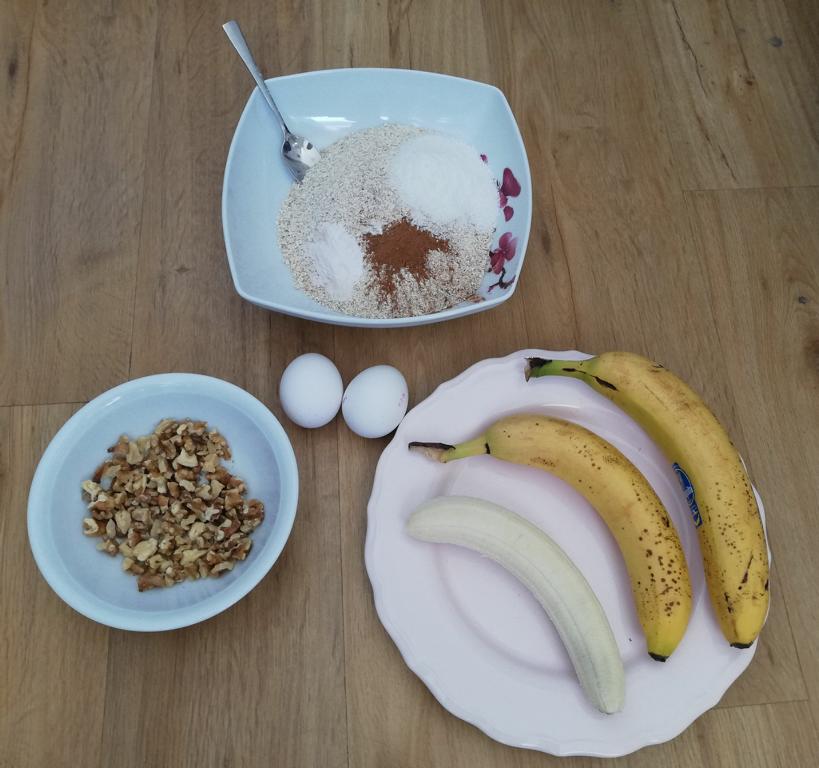

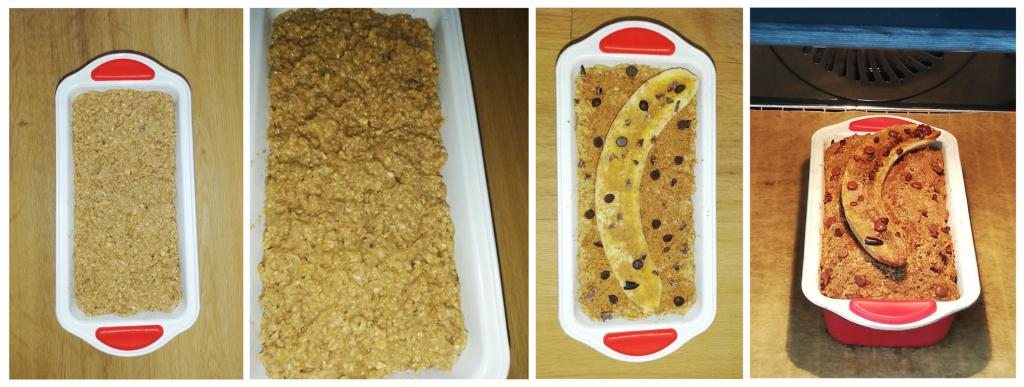

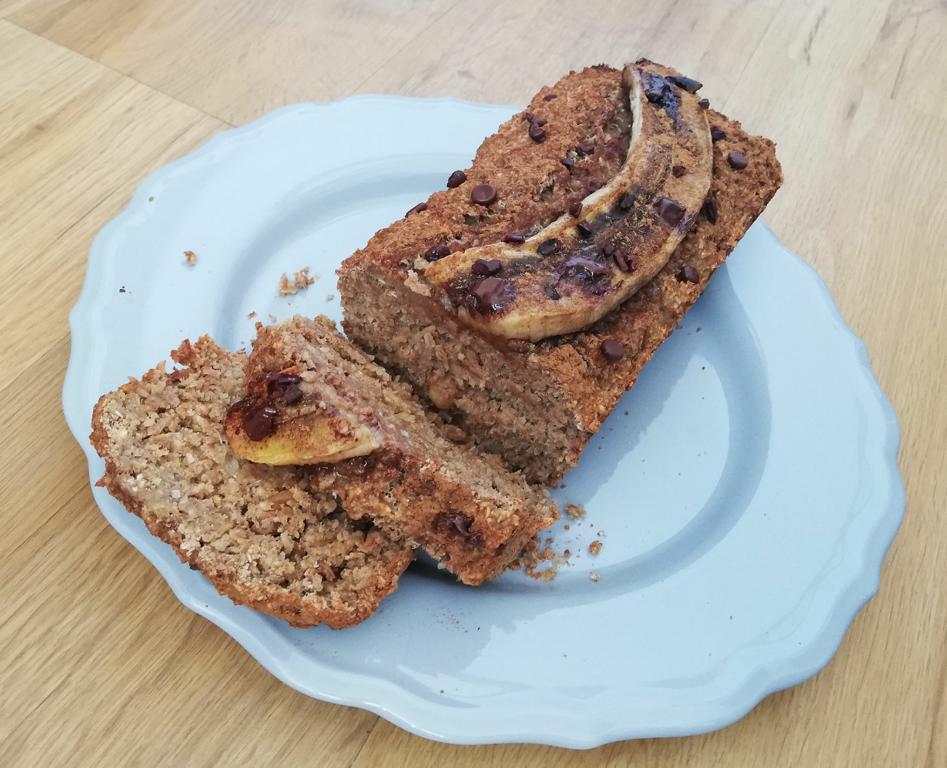
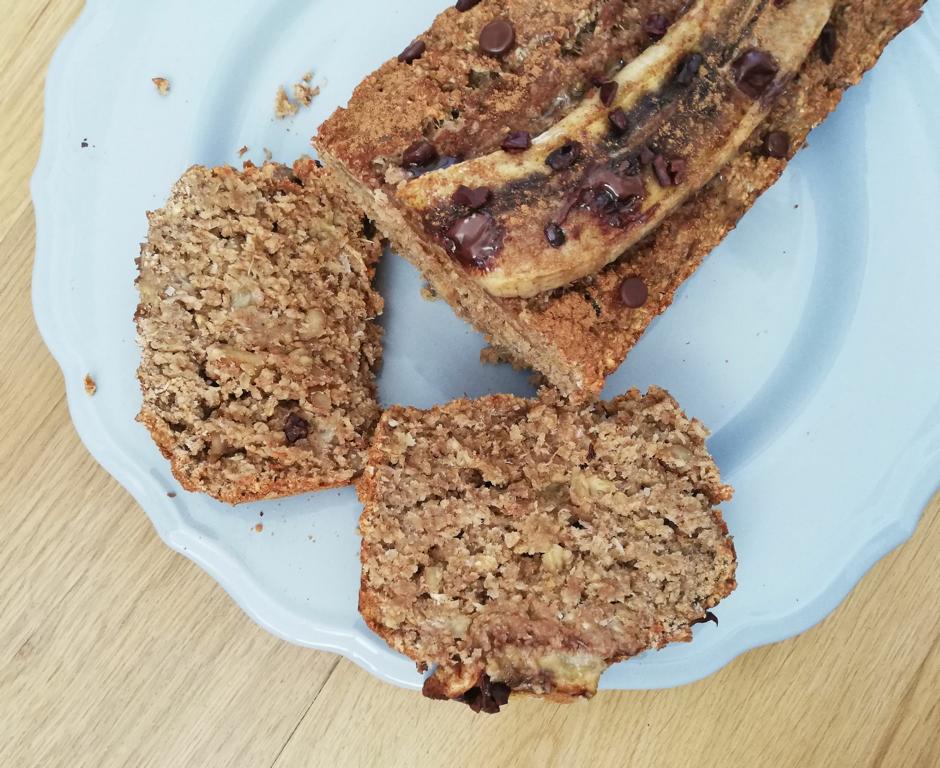
The market for niche products of all kinds is indeed growing and it includes bread. There is protein bread (in my opinion disgusting in taste ^^°), bread with chia seeds, poppy seeds, sunflower seeds or caraway crust and those made from ancient grains. Actually there is something for everyone. Which bread do you like best?
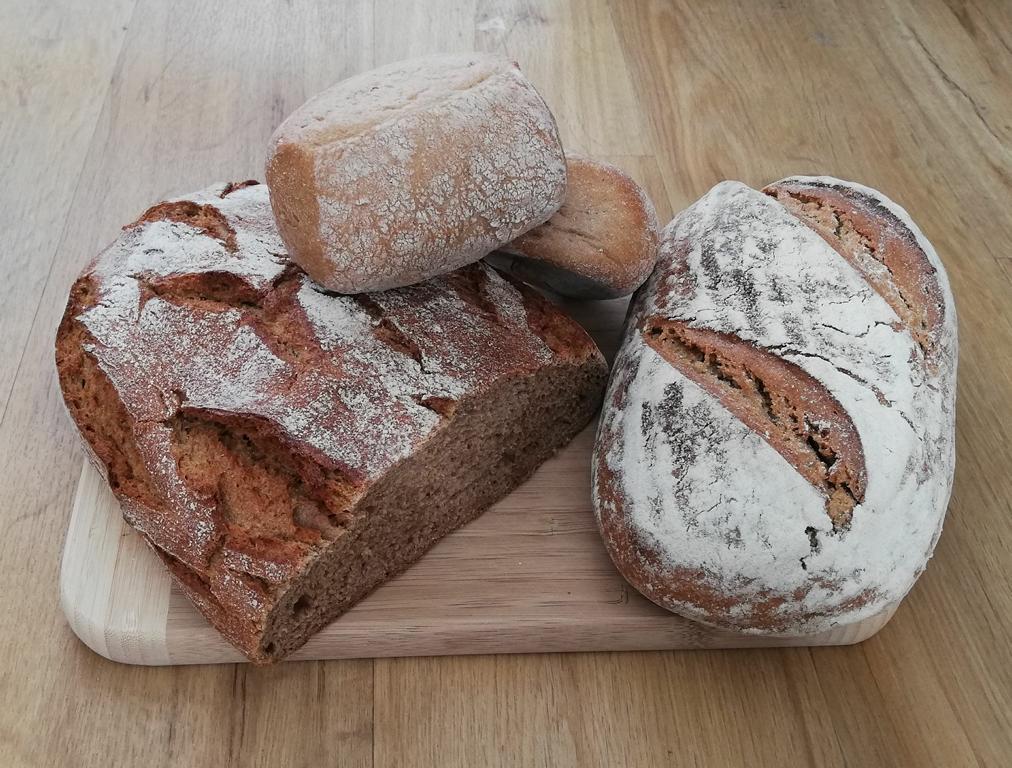
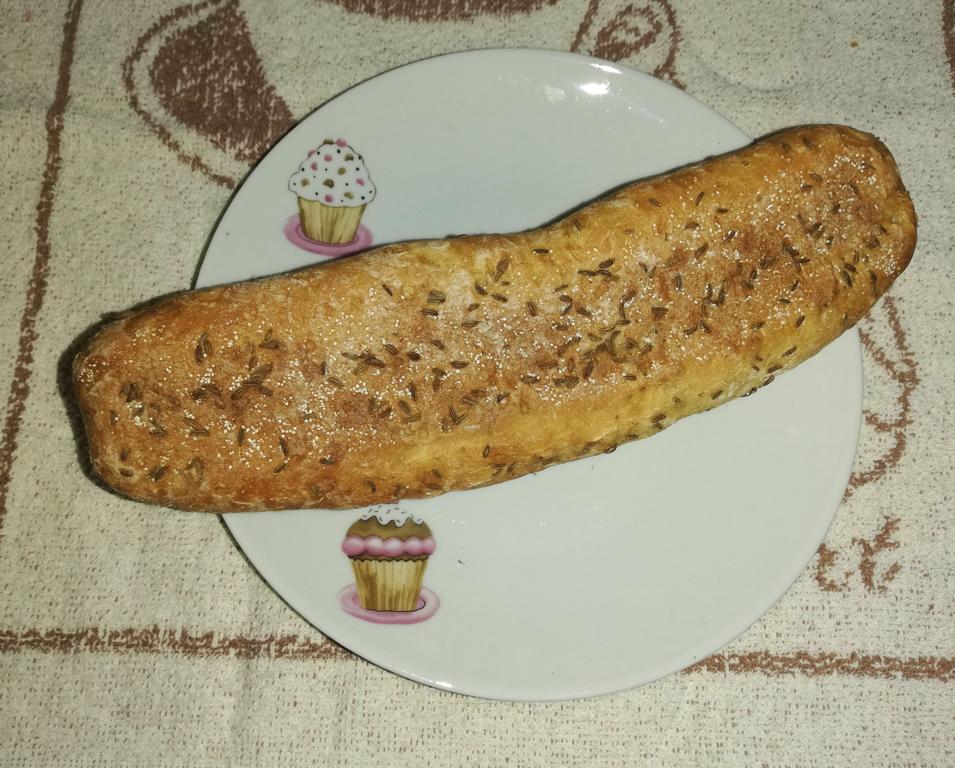
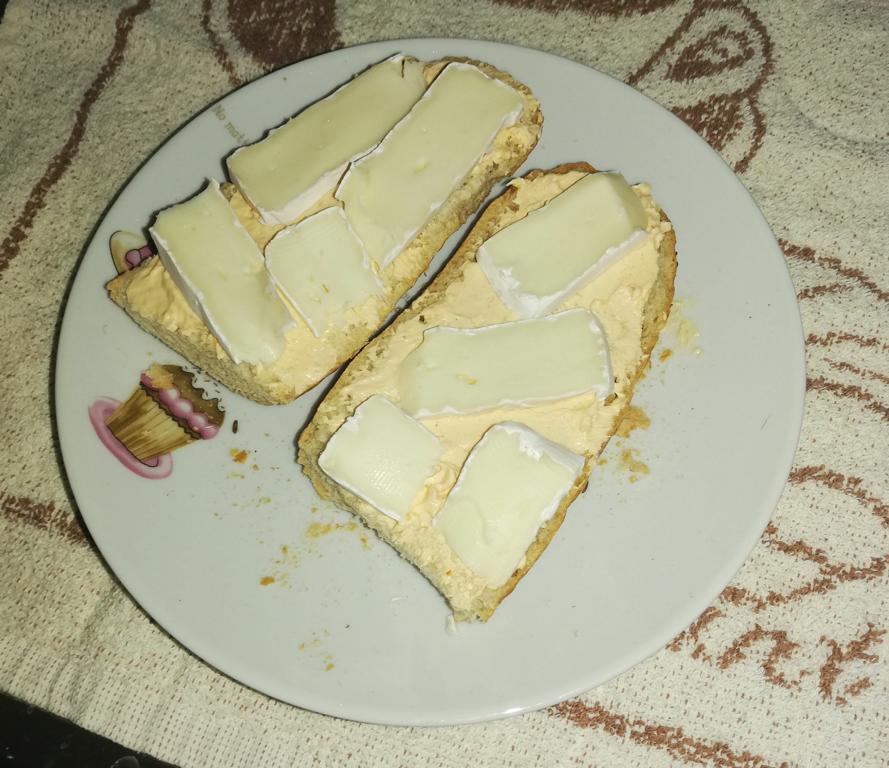
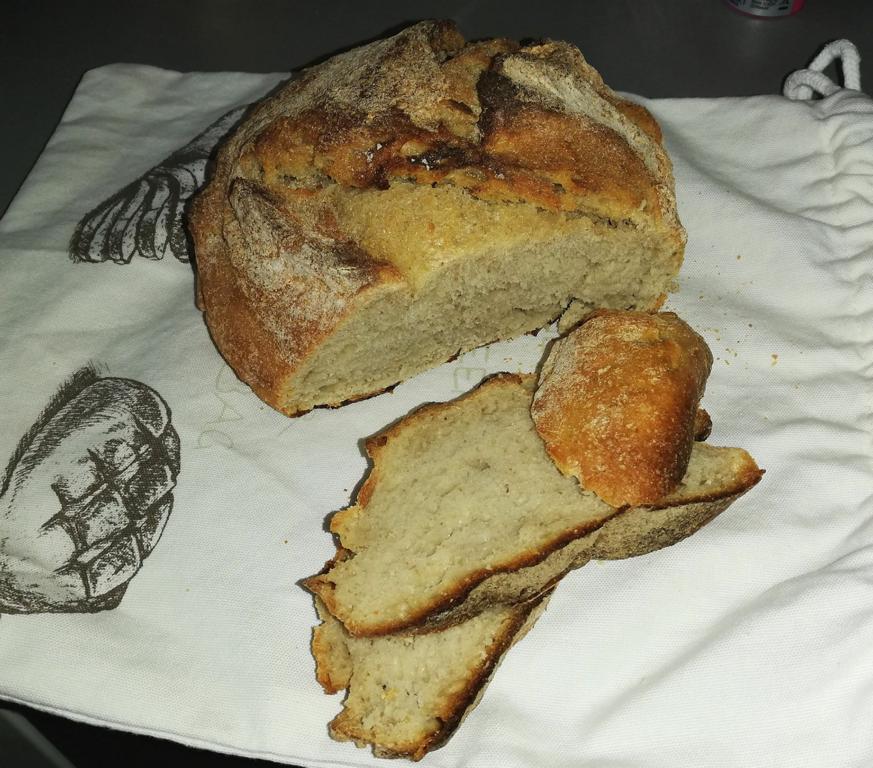
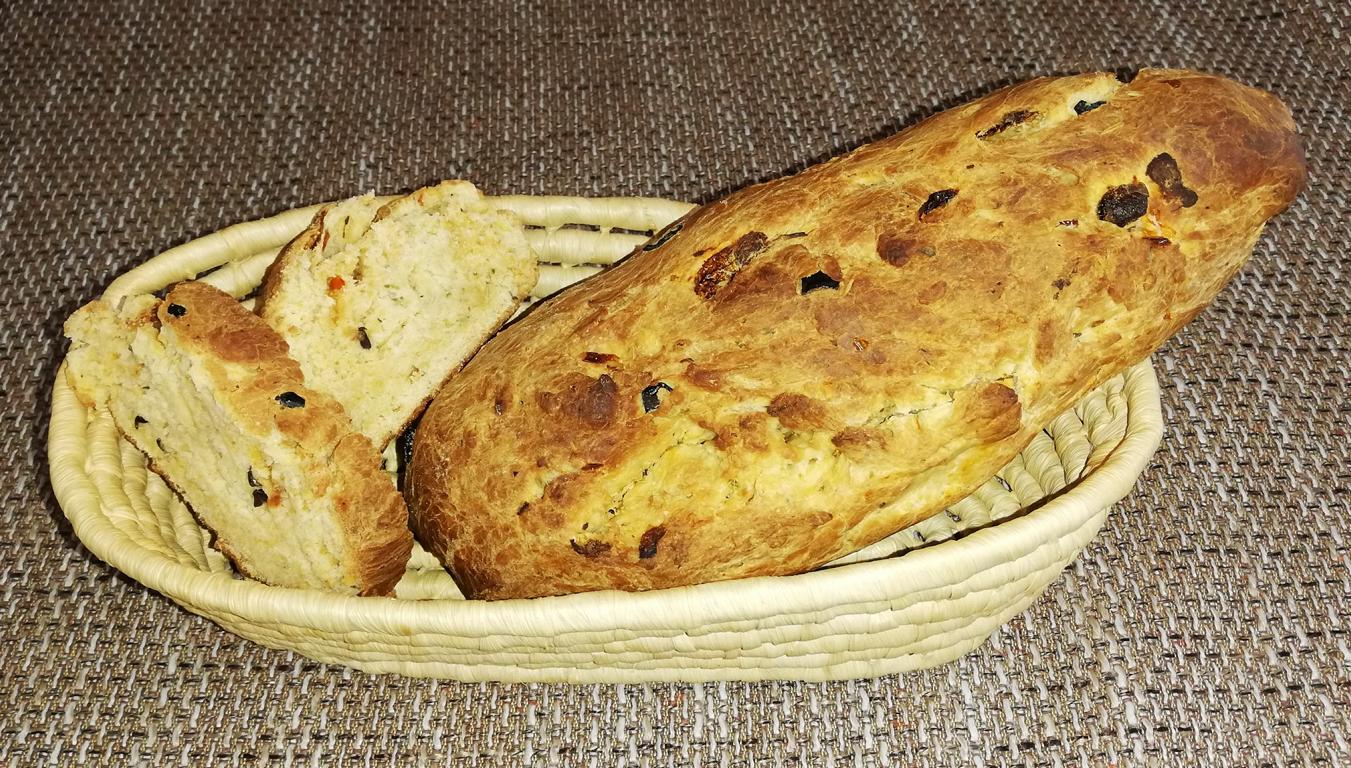
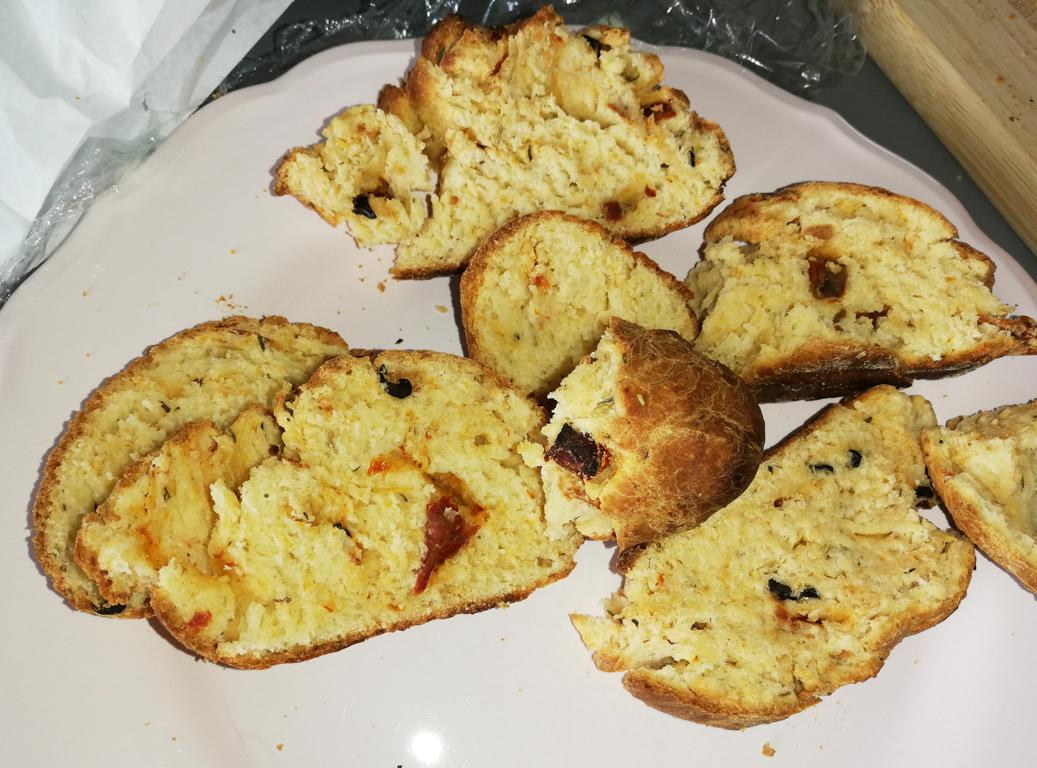
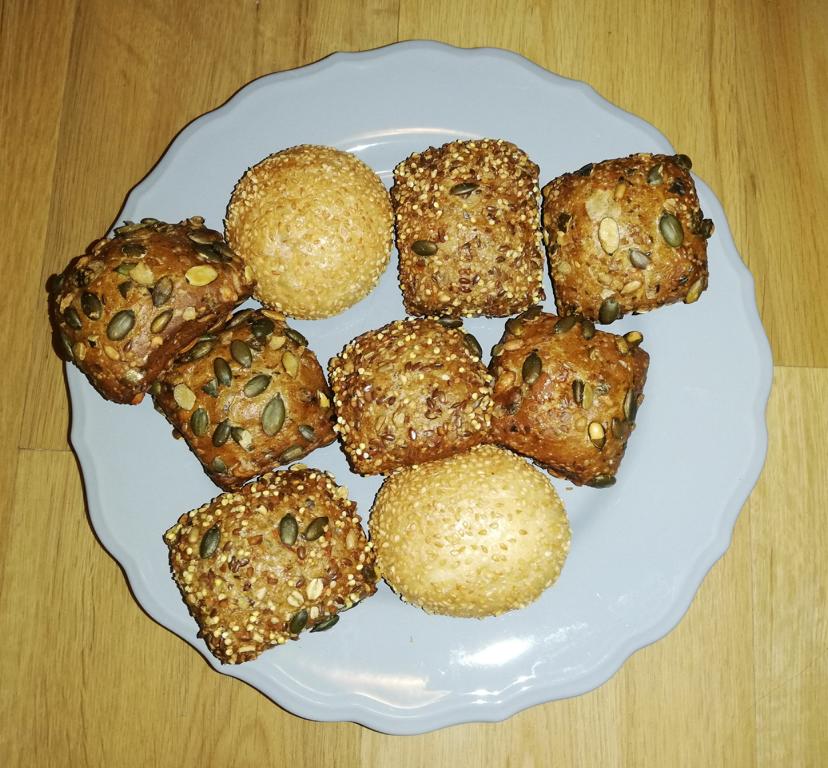
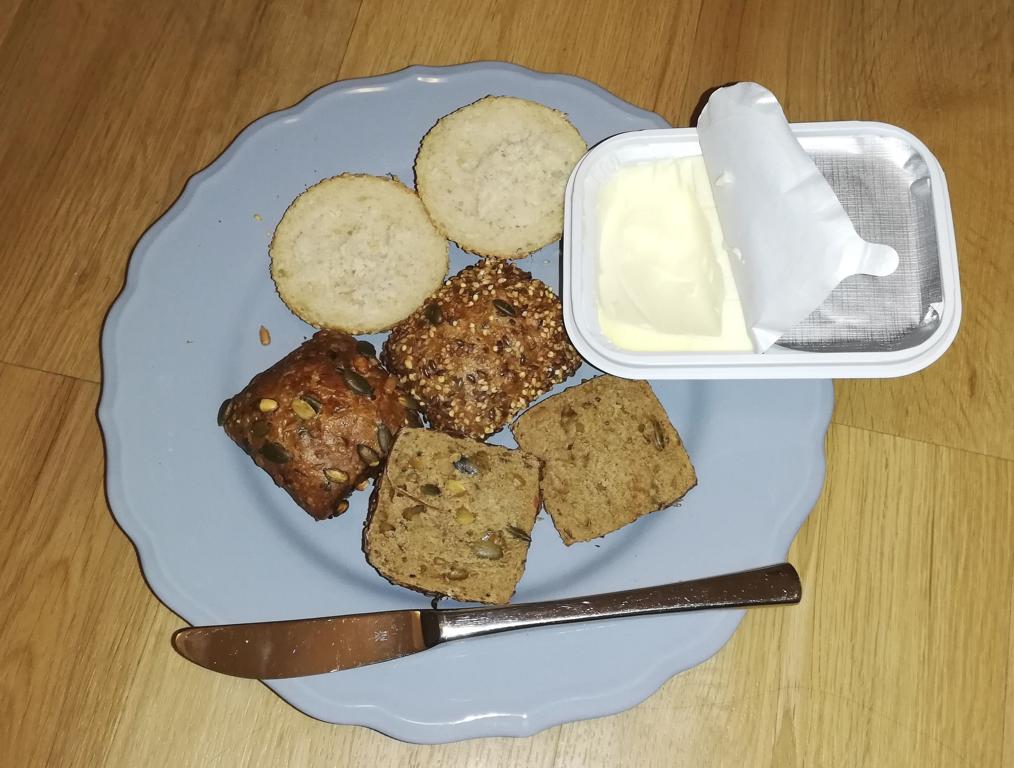
Sources:
T-Online post: What makes German bread unique (German only)
Wikipedia: bread (German, also English, Japanese, +)
Wikipedia: bread sorts (German, also English, +)
Wikipedia: rye (German, also English, Japanese, +)
Wikipedia: whole wheat bread (German, also English, Japanese, +)
Wikipedia: whole wheat (German, also English, Japanese, +)
Wikipedia: flour (German, also English, Japanese, +)
Wikipedia: superfine flour (German only)
Wikipedia: pumpernickel (German, also English, Japanese, +)
Wikipedia: kommissbrot (German, also English, +)
Wikipedia: toast (German, also English, Japanese, +)
my daily experience XD (only available to me, sorry :P)
my memory storage XD (only available to me, sorry :P)
Die deutsche Brotkultur
Ein spätes frohes neues Jahr wünsche ich euch allen! Ja, Currywurst & Kimono ist noch da! Ich hoffe, dass ich zukünftig wieder mehr Zeit für den Blog finde, aber im Augenblick geht es noch etwas schleppend voran. Ihr braucht aber keine Angst zu haben, dass keine neuen Beiträge mehr kommen werden. Es dauert nur eben ein wenig…
Heute ist mal wieder ein wenig kulinarische Bildung dran, nämlich die deutsche Brotkultur.
Deutschland ist wirklich das Land des Brotes. Die Deutschen essen eine Menge Brot. Egal, ob morgens zum Frühstück, am Abend oder zwischendurch, als Snack zum Picknick draußen oder in der Mittagspause im Büro oder der Schule. Das Abendessen wird in Deutschland alternativ auch “Abendbrot” genannt. Das allein zeigt schon den Stellenwert, der dem Brot in der deutschen Kultur beigemessen wird. In Europa und Nordamerika ist es ein unverzichtbares Grundnahrungsmittel so wie in Japan (und vielen anderen asiatischen Ländern) der Reis, der namentlich auch mit einer Mahlzeit gleichgesetzt werden kann. Das Wort “Brot” wurde auch als Synonym für Beschäftigung oder Unterhalt verwendet. Auch heute noch gibt es viele deutsche Redensarten, die auf die Wichtigkeit des Brotes hindeuten, wie z.B. “jemanden mit Zuckerbrot und Peitsche behandeln” (mit dem Zuckerbrot anlocken und motivieren, mit der Peitsche etwas unsanfter nachhelfen), etwas ist “eine brotlose Kunst” (wenn man damit kein Geld verdienen kann) oder man muss erstmal “kleine Brötchen backen” (klein anfangen, sparsam leben).
Der Ursprung des Brotes
Brot gibt es in seiner frühesten Form schon seit spätestens der mittleren Altsteinzeit. Anfangs wurden wilder Hafer und Gerste zu Mehl vermahlen, mit Wasser vermengt und gekocht oder gebacken. Es war eher ein Brei, der manchmal getrocknet und später auf flachen Steinen als Fladen oder in der Asche gebacken wurde. Vielerorts gibt es Fundstätten von steinzeitlichen Überresten, die belegen dass es das Brotbacken schon mindestens rund 4.000 Jahre vor Entwicklung der Landwirtschaft und des Getreideanbaus gegeben hat. Vor ca. 10.000 Jahren begann der Mensch dann mit dem systematischen Anbau von Getreide.
Zwei Erfindungen haben das Brotbacken entscheidend revolutioniert: Erstens der Bau von Backöfen und zweitens die Entdeckung der Wirkung von Hefen. Mit einem Backofen konnten nun auch runde und volumenreichere Brotsorten im heißen Dampf gleichmäßig durchgebacken werden. Die einfachste Form bestand aus einem umgedrehten Lehmtopf auf einem heißen Stein. Der Einsatz von Hefe machte den Teig lockerer und schmackhafter. Diese Entdeckung brauchte jedoch eine lange Zeit, da der Gärungsprozess zunächst rein zufällig entstand und erst nach und nach durch den Menschen gesteuert werden konnte.
Die ersten Menschen, die sich mit der Weiterentwicklung des Brotbackens beschäftigten, waren die Ägypter der Antike. Sie ließen sogar Bäckereien entstehen und schufen zwischen 2850 bis 1500 vor Christus 30 verschiedene Brotsorten. Von Ägypten aus gelangte die Brotkultur über Griechenland und das Römische Reich nach Europa. Die Römer entwickelten die ersten großen Mühlen für die Produktion von feinerem Mehl und erfanden Teigknetmaschinen. Bis ins 19. Jahrhundert hinein wurde in Europa mit kleinen Veränderungen nach römischen Grundtechniken Brot gebacken. In Deutschland ist es nach wie vor beliebt und inzwischen in vielfältigster Art und Weise verfügbar.
Das Besondere der Deutschen Brotkultur
Über 3.200 verschiedene Brotsorten gibt es derzeit auf dem deutschen Markt, denn die Deutschen lieben vor allem die Vielfalt. Während in anderen Ländern hauptsächlich Weizenbrote hergestellt werden, gibt es in Deutschland auch viele andere Getreidearten. Das liegt vor allem an den günstigen Anbaubedingungen, z.B. Roggen in Norddeutschland oder Dinkel in der schwäbischen Alb. Zudem bestand Deutschland früher aus vielen kleinen Einzelstaaten, die alle ihre eigene Brotkultur pflegten. So entwickelten sich verschiedene Geschmäcker und es gibt noch heute reichlich unterschiedliche Brotrezepte.
Weltweit einzigartig ist auch, dass es in Deutschland einen eigenen Ausbildungsgang für Bäckermeister gibt. So wird die deutsche Backkultur auch international qualitativ geschätzt. Die Deutsche Brotkultur wurde sogar zum immateriellen UNESCO-Kulturerbe Deutschlands erklärt. Um dies zu betonen ernennt das Deutsche Brotinstitut jährlich eine Brotsorte zum “Brot des Jahres”. 2021 war es das Dreikornbrot, 2022 das Holzofenbrot und in diesem Jahr (2023) das Kürbiskernbrot.
Die unterschiedlichen Brotsorten
Grundsätzlich gibt es die zwei Arten gesäuertes und ungesäuertes Brot. Gesäuertes Brot wird mit einem Triebmittel wie Sauerteig oder Hefe hergestellt und das ungesäuerte Brot wie z.B. Fladenbrot ohne. Man kann Brot jedoch auch nach den verwendeten Getreidearten (z.B. Weichweizen, der Unterart Dinkel, Hartweizen oder Roggen) unterscheiden.
Weizenbrot – auch Weißbrot genannt – wird zum Beispiel in Frankreich als Baguette oder in Italien als Ciabatta gegessen. Es hat üblicherweise einen hellen Teig (daher der Name), schmeckt leicht und locker, da es oft sehr weich ist, und gilt im Allgemeinen als eher ungesund. Auch hält das Sättigungsgefühl nach dem Verzehr nicht lange an und es ist nur kürzere Zeit haltbar.
Roggenbrot, das auch als Schwarzbrot bezeichnet wird, hat eine dunklere Farbe, ist fester, oft körniger, herber, saftiger und aromatischer. Wegen des hohen Gehalts an der Aminosäure Lysin gelten Roggenprodukte als wichtige Bestandteile einer ausgewogenen Ernährung. Der Getreidebrei ist nährstoffreicher und verweilt länger im Verdauungsapparat, was sättigender wirkt und auch eine krebshemmende Wirkung haben soll, weshalb Roggen ernährungswissenschaftlich eher als gesunderes Getreide angesehen wird. Auch aus Emmer und Einkorn lässt sich Brot herstellen, was heutzutage jedoch nicht mehr in großem Stil betrieben wird.
Man kann Brot aber auch nach dem verwendeten Mehl unterscheiben. Das gängige Haushaltsmehl entspricht in Deutschland der Mehltype 405. Es ist ein sehr helles Mehl, das über gute Backeigenschaften, jedoch einen geringen Mineralstoffgehalt verfügt und relativ lange haltbar bleibt. 405 wird vorwiegend aus dem ersten Schrot gewonnen. Es enthält keine Schalenteile mehr und ist reich an Stärke. Wird es weiter vermahlen, entstehen die dunkleren Mehltypen. Diese enthalten mehr vom öligen Keimling und sind daher nur kürzere Zeit haltbar, dafür jedoch reicher an Vitaminen (vor allem B-Vitaminen) und Mineralstoffen. Je dunkler ein Weizenmehl ist und je höher die Mehltypen-Nummer, desto mineralstoffreicher ist es. Auch für Dinkel- und Roggenmehl gibt es verschiedene Mehltypen.
Am gesündesten ist das Vollkornmehl. Bei ihm sind Schale und Keimling mit enthalten und es hat daher viele Ballaststoffe, Vitamine, Öle und Mineralstoffe. Der Gehalt an essenziellen Fettsäuren der Öle gilt als besonders gesundheitsfördernd.
Bis es zu dieser Anerkennung des Vollkorns kam, war es aber ein langer Weg. Bis ins frühe 19. Jahrhundert hinein galt dunkles Brot als rückständig und ländlich. Wer es sich leisten konnte, bevorzugte Weißmehl. Feiner gesiebt, ohne grobe Bestandteile und mehr Stärke enthaltend, verkürzte es die Backzeit deutlich und reagierte besser auf Hefe und andere Triebmittel. Schnell wurde es ein Statussymbol der Oberschicht. Mit der industriellen Herstellung von Nahrungsmitteln wurde vermehrt für dunkles Brot geworben. Man begann auch, sich wissenschaftlicher mit der Ernährung auseinanderzusetzen. Zu Kriegszeiten etablierte sich das westfälische Pumpernickel, ein Vollkornbrot aus Roggenschrot, wegen der langen Haltbarkeit zur praktischen Notration für Soldaten. Durch einen westfälischen Auswanderer gelangte es in die US-amerikanische Armee im 19. Jahrhundert. Bekannt war das Rezept vermutlich bereits im 16. oder 17. Jahrhundert. Auch das etwas hellere (da aus Roggen und Weizen hergestellt), aber immer noch dunkle Kommissbrot erfüllte seinen Zweck als Militärversorgung.
Wegen der gesunden Bestandteile des Vollkornbrotes gilt der Verzehr als Prävention bzw. Risikominimierung für die Volkskrankheiten Diabetes und Herzinfarkt. Es sorgt für eine gute Darmregulierung, beugt Darmkrebs vor und senkt die Blutfettwerte.
Dunkles Brot, das ja als typisch deutsch gilt, ist für viele Leute anderer Länder und zum Teil auch für die Deutschen selbst, ein bisschen wie dunkle Schokolade: gesunder als die helle Variante, aber etwas herb im Geschmack. 😉 Mal ist es ganz lecker, z.B. als deftige Brotzeit zu Käse, Wurst oder einem Spiegelei. Marmelade und Honig essen die meisten dann jedoch lieber auf hellem Weißbrot. Die am häufigsten gegessene Brotsorte in Deutschland ist aber das Mischbrot aus Roggen- und Weizenmehl. Es wird auch als Graubrot bezeichnet und kann je nach Rezept mehr aus Weizen oder mehr aus Roggen bestehen.
Desweiteren gibt es Spezialbrot mit besonderen Zutaten wie Kürbiskernen oder Sonnenblumenkernen, Eiweißbrot, Kartoffelbrot, mit Vitaminen angereichertes oder glutenfreies Brot und vieles mehr. Auch Toastbrot und Knäckebrot, welches ursprünglich aus Schweden stammt, sind in Deutschland gebräuchlich. Das Toastbrot, das in Deutschland schon sehr lange bekannt war, wird jedoch erst seit den 1950er-Jahren in der typisch hellen heutigen Version angeboten und inzwischen vor allem mittels Toaster aufgeröstet verzehrt. Seit den 1980er-Jahren gibt es auch den dunkleren Vollkorntoast.
Das brettharte, keksige und süßliche Zwieback aus Italien ist in Deutschland vor allem als Kindernahrung und Krankenkost bekannt, weil es Magen und Darm besonders schont.
Da Deutschland durch Zuwanderung und kulturellen Austausch auch sehr international geprägt ist, findet man Brotsorten aus den verschiedensten Ländern in Deutschland. Neben den oben genannten Brotarten gibt es mitunter in Bäckereien, Supermärkten, ausländischen Läden oder Restaurants z.B. auch Fladenbrot und Simit (Sesamkringel) aus der Türkei, Pita (Weißbrot) aus Griechenland, Ciabatta aus Italien, Baguette und Croissants aus Frankreich, Naan (helles Fladenbrot) aus Indien oder Tortilla aus Mexiko.
Wo kaufen die Deutschen ihr Brot?
Das beste deutsche Brot gibt es natürlich frisch in der Bäckerei! Da die Deutschen, besonders am Wochenende, gerne Brötchen frühstücken, wollen sie schon am frühen Morgen damit versorgt sein. Entweder sie haben es sich schon am Vortag besorgt oder sie eilen morgens vor der Arbeit oder am Samstag noch einmal schnell zum Bäcker, den es an jeder zweiten Ecke gibt. Die meisten haben schon um 06:00 oder 07:00 Uhr geöffnet, wenn die Supermärkte noch geschlossen sind, und erfüllen die Luft mit dem Geruch von frisch gebackenen Produkten. Nur sonntags hat nicht jeder Bäcker auf, da diesen Tag auch die meisten anderen Geschäfte in Deutschland geschlossen haben.
Da Brot vom Bäcker natürlich auch etwas teurer ist und nicht jeder für Brötchen morgens aus dem Bett fallen möchte, kaufen jedoch die meisten Leute auch viel Brot im Supermarkt. Jeder Discounter hat abgepacktes Brot, schon fertig in Scheiben geschnitten, in vielen verschiedenen Sorten im Angebot sowie Aufpackbrötchen, die man nur noch im Ofen erwärmen muss. Größere Supermarktketten und inzwischen auch die meisten Discounter haben zudem eine eigene Abteilung für “frische Backwaren”, also Brötchen, ganze Brote, Kuchen und andere Backwaren, die in der Regel für den baldigen Verzehr gedacht sind. Diese werden meist in Backstuben vorgebacken, in die Supermärkte geliefert und vor Ort noch einmal aufgebacken.
Angefangenes Brot, egal ob in Scheiben geschnitten oder als ganzer Brotlaib zum Selberschneiden hält sich gut ein paar Tage bei Zimmertemperatur in einem Brotkasten oder in ein Geschirrhandtuch eingeschlagen. Manche Leute bewahren ihr Brot auch im Kühlschrank auf, was die Haltbarkeit deutlich verlängert, das Brot aber schnell austrocknet. Wer auf Nummer sicher gehen will, friert Brot und Brötchen einfach ein und backt es bei Bedarf im Ofen auf. Im Supermarkt gibt es auch Beutel mit Tiefkühlbrötchen zu kaufen. Die Qualität nach dem Aufbacken ist dabei erstaunlicherweise besser, als die der ungekühlten Aufbackbrötchen. Tiefkühlware muss also nicht immer schlecht sein! 😉 Frische Brötchen vom Bäcker oder die aus dem Supermarkt kann man am nächsten, spätestens übernächsten Tag noch einmal aufbacken. Sie werden aber schnell unglaublich hart.
Für altes Brot, besonders Brötchen, gibt es in der deutschen Küche auch noch ein paar Verwendungsmöglichkeiten. So kann man klein geschredderte Brötchen als Paniermehl verwenden (deutsches “Panko”) oder Weißbrotwürfel in Milch einlegen, um daraus herzhafte Semmelknödel als Beilage zu Fleisch und Gemüse oder süßen Brotauflauf herzustellen. Inzwischen ist es zudem wieder mehr in Mode gekommen, selber Brot zu backen. Einige Leute tun dies, weil es ohne chemische Inhaltsstoffe und Haltbarkeitsmittel natürlich gesünder ist, andere aus Kostengründen (Mehl, Wasser, Salz und Hefe ist schließlich nicht teuer) und dann gibt es noch die Allergiker (und auch die, die sich für welche halten 😉 ), die z.B. bestimmte Mehlsorten nicht vertragen. Dabei wird der Markt für Nischenprodukte aller Art auch beim Brot immer größer. Es gibt Eiweißbrot (meiner Meinung nach widerlich im Geschmack ^^°), Brot mit Chiasamen, Mohnsamen-, Sonnenblumenkernen- oder Kümmel-Kruste und wieder aus Urgetreidesorten. Eigentlich ist für jeden etwas dabei. Welches Brot mögt ihr am liebsten?
Quellen:
T-Online-Artikel: Was deutsches Brot so besonders macht (nur deutsch)
Wikipedia: Brot (deutsch, auch englisch, japanisch, +)
Wikipedia: Brotsorten (deutsch, auch englisch, +)
Wikipedia: Roggen (deutsch, auch englisch, japanisch, +)
Wikipedia: Vollkornbrot (deutsch, auch englisch, japanisch, +)
Wikipedia: Vollkorn (deutsch, auch englisch, japanisch, +)
Wikipedia: Mehl (deutsch, auch englisch, japanisch, +)
Wikipedia: Auszugsmehl (nur deutsch)
Wikipedia: Pumpernickel (deutsch, auch englisch, japanisch, +)
Wikipedia: Kommissbrot (deutsch, auch englisch, +)
Wikipedia: Toastbrot (deutsch, auch englisch, japanisch, +)
meine Alltagserfahrungen XD (nur für mich verfügbar, sorry :P)
mein Gedächtnisspeicher XD (nur für mich verfügbar, sorry :P)

